POKÉMON SCARLET: EXPECTING, ACCEPTING, AND PERFECTING
[OPEN SPOILERS AHEAD!]
how much of an introduction should i give Pokémon? if you're on this website, whether as a friend or as some wayward traveller, then odds are you already know all the basics. born out of Japan, inspired by the classic hobby of bug catching, revitalized the Game Boy almost a decade into its production cycle, became a trading card game, an anime, a worldwide cultural phenomenon the likes of which people have never seen, still trucking 26 years down the road. we've been there, done that - we are all there, doing that, every waking moment of our lives. Pokémon is, without a doubt, a complete and utter monolith of modern pop culture, saturated at levels that other franchises don't even dare to dream about.
and, like clockwork, our ninth new batch of creatures is upon us. the lines on what constitutes a new 'generation' of Pokémon have gotten a little blurrier since i was young, but i still know it when i see it (or, at least, i know when everyone generally decides to agree where those lines fall). Pokémon Scarlet and Violet land as the second major franchise iteration on the Nintendo Switch, bringing us milestones like an open world, real-time co-operative play, and the 1000th individually numbered monster in series history. if you have been on the internet at all lately as of this writing, you're probably very, very aware of these new games, for better and for worse.

i've gone once more into the breach, and having poured hours upon hours into Pokémon Scarlet, i've found myself leaning towards the 'for better' side of that equation, but not without a lot of thought, a few asterisks placed on any glowing praise, and a complicated history with the last decade or so of Pokémon games that led us to Generation IX.
i could spend a long time talking about my history with Pokémon, because it's been with me about as long as i can remember. from the time i could pick up a Game Boy Advance, it's been a reliable favorite, weathering years of other interests cycling in and out. this isn't some miracle or fluke - Game Freak tapped into something deep and primordial with Pokémon. that might sound dramatic, but is there really any other way to describe it? there's an innate appeal to the world they've crafted, the creatures they've designed, and all the mechanical depth you can sink into. i'm not highlighting some obscure deep cut when i say Pokémon has meant a lot to me for a long time, because that's true for millions of people. it's maybe the least controversial opinion i could have.
the tough part, then, and perhaps the most important bit of context i can give you, is that Pokémon Scarlet is the first game i've played in the series in about six years. my love for the platonic ideal of Pokémon has never waned, but my patience with the games did, for quite a while.
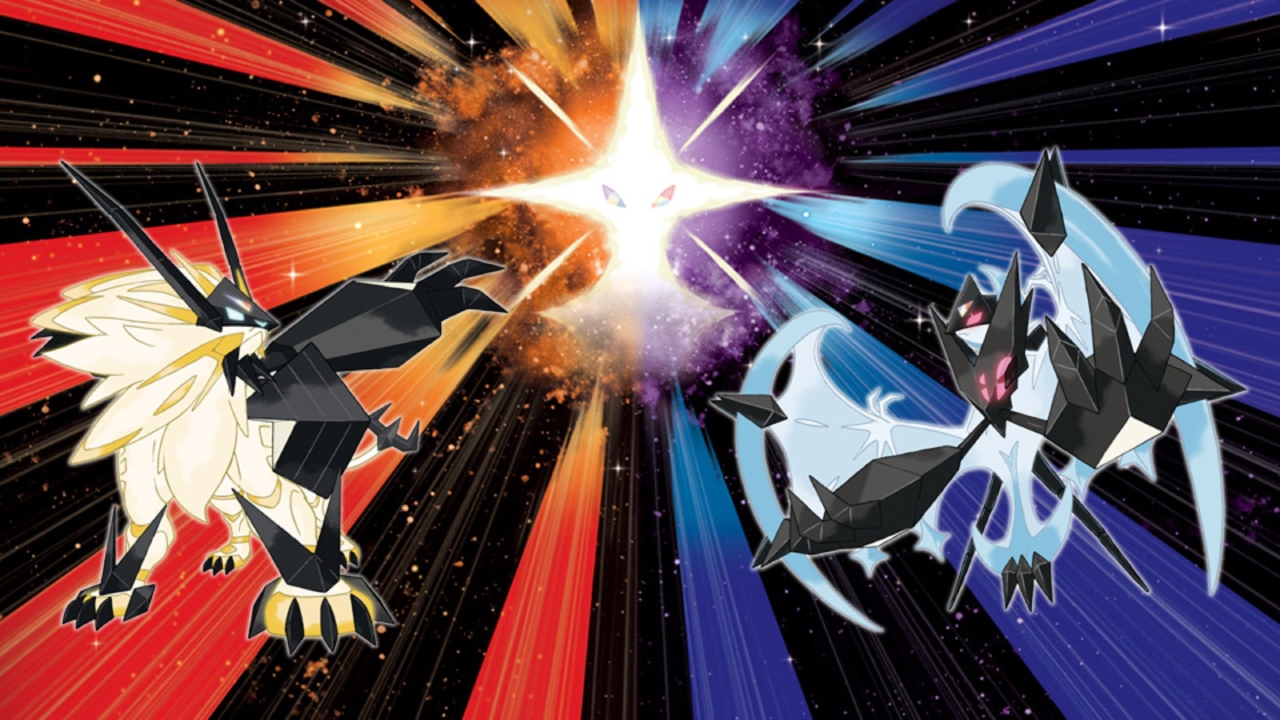
it started in 2017. with the Switch bringing together Nintendo's handheld and console divisions and having an absolutely stunning debut year, it was easy to start wondering if perhaps Game Freak had been preparing for this generational leap behind the scenes with a new game that could take advantage of everything the Switch had to offer. instead, 2017 marked the launch of Pokémon Ultra Sun and Ultra Moon. there was a long-standing tradition of 'third versions' coming in shortly after the original pair and offering a definitive experience with any given generation of the franchise, but in 2017, it was easy to feel like we had moved past that. X and Y received no corresponding Pokémon Z, and Black and White had received full-blown sequels in place of the usual polished repackaging. it had been almost 10 years since Game Freak put out 'the same game, but better' and this time, they were going even further by splitting this definitive edition into its own pairs, a move which only stung more given how much of their new content could have been released as DLC through the Nintendo eShop.
so, with a bit of a heavy heart, i decided i didn't need Stakataka that badly, and for the first time since Pokémon LeafGreen, i skipped a mainline title, eagerly awaiting the day when the series would finally land on the Nintendo Switch.
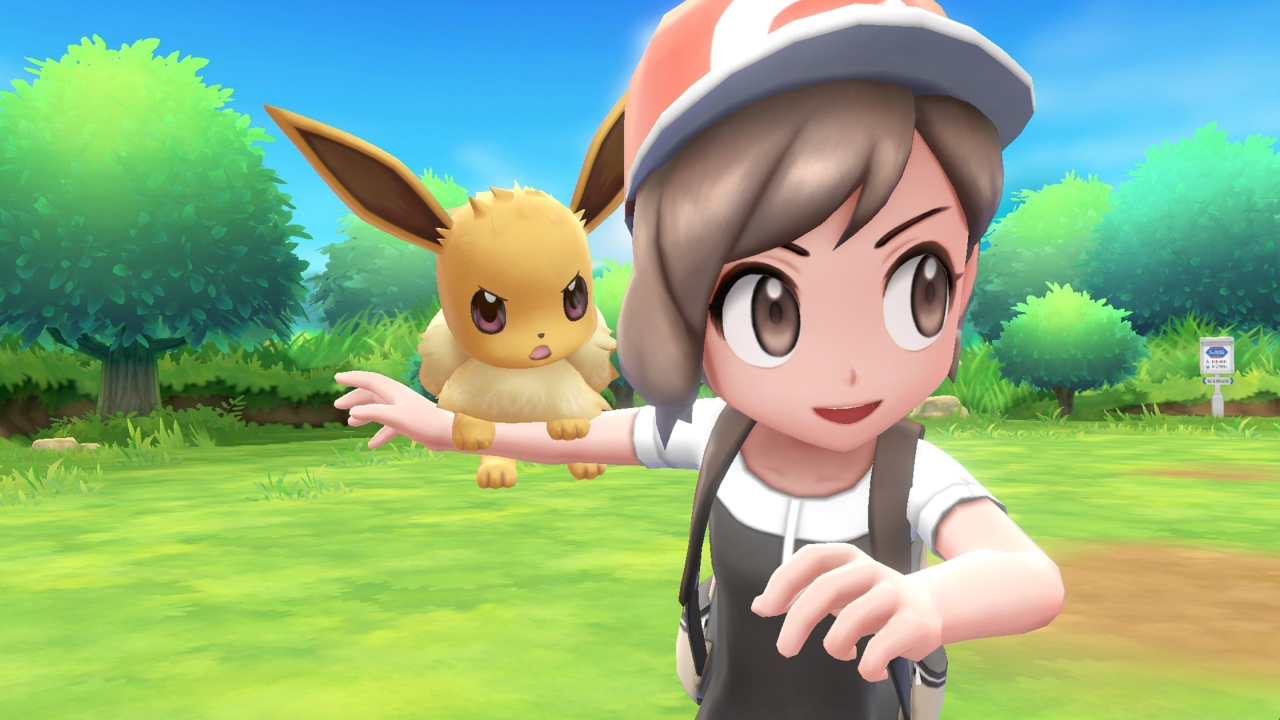
one curled finger on the Mankey's paw later, and Pokémon: Let's Go, Pikachu! and Let's Go, Eevee! launched as the first 'mainline' Pokémon games on a home console. in the wake of the runaway success of mobile spin-off Pokémon Go, Game Freak cashed in on all those lapsed fans by delivering a return to the good ol' days of Kanto, in every sense of the word 'return'. any Pokémon outside of the original 151 - including cross-generational evolutions - simply weren't in the game, at all, save for mysterious and marketable newcomer Meltan. mechanics like Abilities and held items that had been adding layers of depth to Pokémon battling my entire life were absent, because this is Kanto, just like you remember it, from Back Then. even the traditional catching mechanics were shuffled around to try and better emulate the experience of Pokémon Go's flick-and-tap gameplay, meaning the first in-house console Pokémon RPG had to be played with motion controls.
it was frustrating to see all this play out, but it wasn't too bad. these games were upfront about who they were for - they're a transitionary step from the mobile market into a more 'traditional' video game. i knew it, and Game Freak knew it too, quickly making sure that everyone knew that a classically designed RPG for 'core fans' would be coming in 2019. this would be it - Generation VIII. new batch of Pokémon, proper RPG for the Switch, fresh start, i'm finally back.
i was not finally back. i mean, i told you that i wasn't already, but this is still a nice little 'comedic rules of three' bit i get to drop in here. i did not buy Pokémon Sword and Shield.
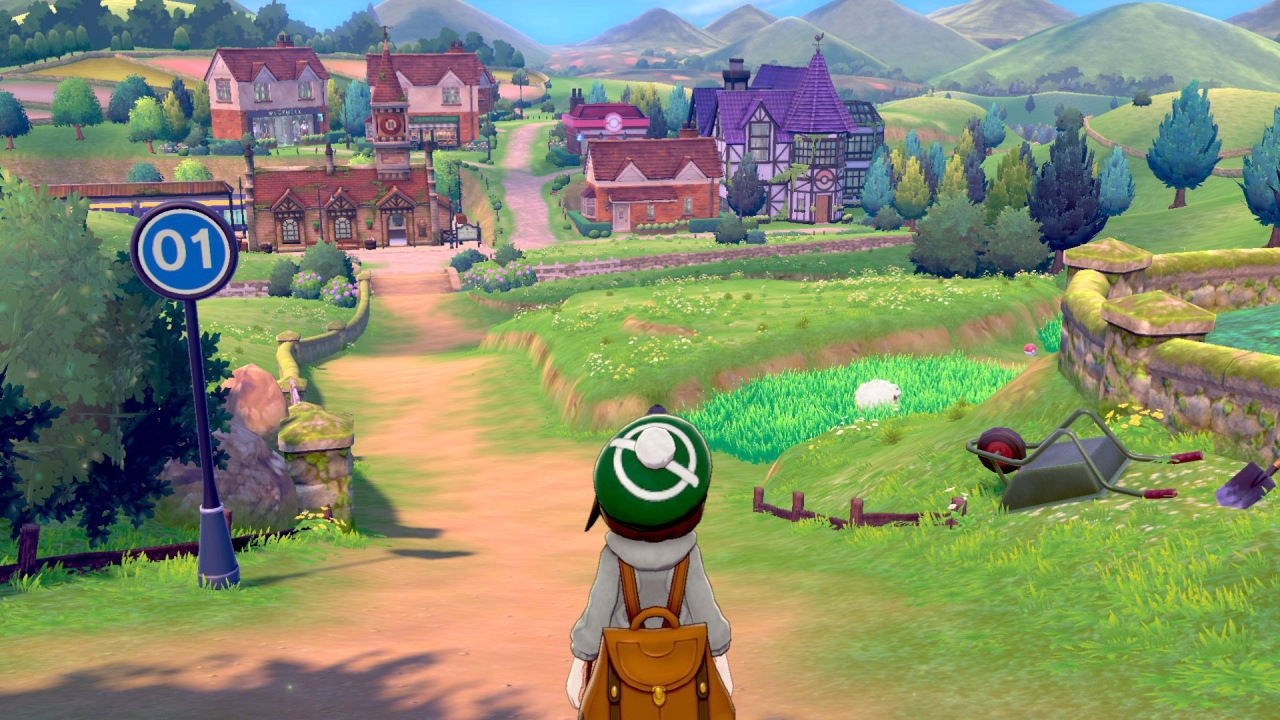
there is a lot i could try to say about these games that i haven't played and why i don't think they're quite right for me, but first, the elephant/Donphan/Copperajah in the room is the design decision that the fandom quickly, snidely, and as i must concede, cleverly dubbed Dexit. Sword and Shield marked a turning point in Pokémon history, as Game Freak made it clear that going forward, they wouldn't be able to fit every Pokémon into every game's code.
at the time, i was extremely bitter about this, and as much as i've made my peace with it, it still leaves a bit of a bad taste in my mouth about the whole thing. i'll have to loop back around later to talk more extensively about why this call 'had to' be made (as much as anything 'has to' happen while making a game in certain ways), but at the time, it was a frustrating compromise to have to live with when it came to Pokémon's big proper leap onto a hybrid handheld/console. every reason that Game Freak gave, the fans would shoot right back with a rebuttal, and the discourse around this game was overall just far more cynical than any other generation of Pokémon before it.

more damning for me than any lack of Pokémon, though, were that Sword and Shield just seemed... dull. Game Freak certainly never lost their touch for fantastic creature designs, but the Galar region drew inspiration from a real-world locale that i can never bring myself to care about, and from a game design perspective, it was Pokémon at its most basic yet, with what would once be interesting detours reduced to a handful of hallways on a one-way, linear, theme park-esque path through the countryside. the game dabbled in expanding on the Pokémon formula with its Wild Area, but at least from the outside, it all seemed like a bit of a half-baked half-measure.
Ultra Sun, i skipped because i had effectively played it already, sans a few endgame bonuses. Let's Go, Eevee!, i skipped because it was very upfront about being for a very different demographic. Pokemon Shield was the first full-on new generation i skipped, because, flat-out, i wasn't sure i'd have a good enough time with it. i've heard that its DLC expansions help to mend some of its issues and flesh the experience out, but being console games, Sword and Shield were already more expensive than their 3DS counterparts, and i wasn't eager to pay even more on top of that to fuck around and find out with Generation VIII.
with Galar's time in the spotlight winding down, the 25th anniversary of Pokémon was celebrated with the announcement of not one, but two new titles to fill out the gap between big new generations. the first of these to launch would be Pokémon Brilliant Diamond and Shining Pearl. previous remakes were grand endeavors to revitalize old favorites using modern technology, but with Game Freak hauling ass to develop what we now know to be multiple new mainline titles, the revisit to Sinnoh ended up outsourced to a smaller studio called ILCA, and they were such faithful ports that they share exact glitches i remember from back in 2007. the most emotion they evoked out of me was a sort of existential dread, as i realized that what i remember as the once brand-new Sinnoh region was now, in fact, Old, and once again, i sat out a new Pokémon release.
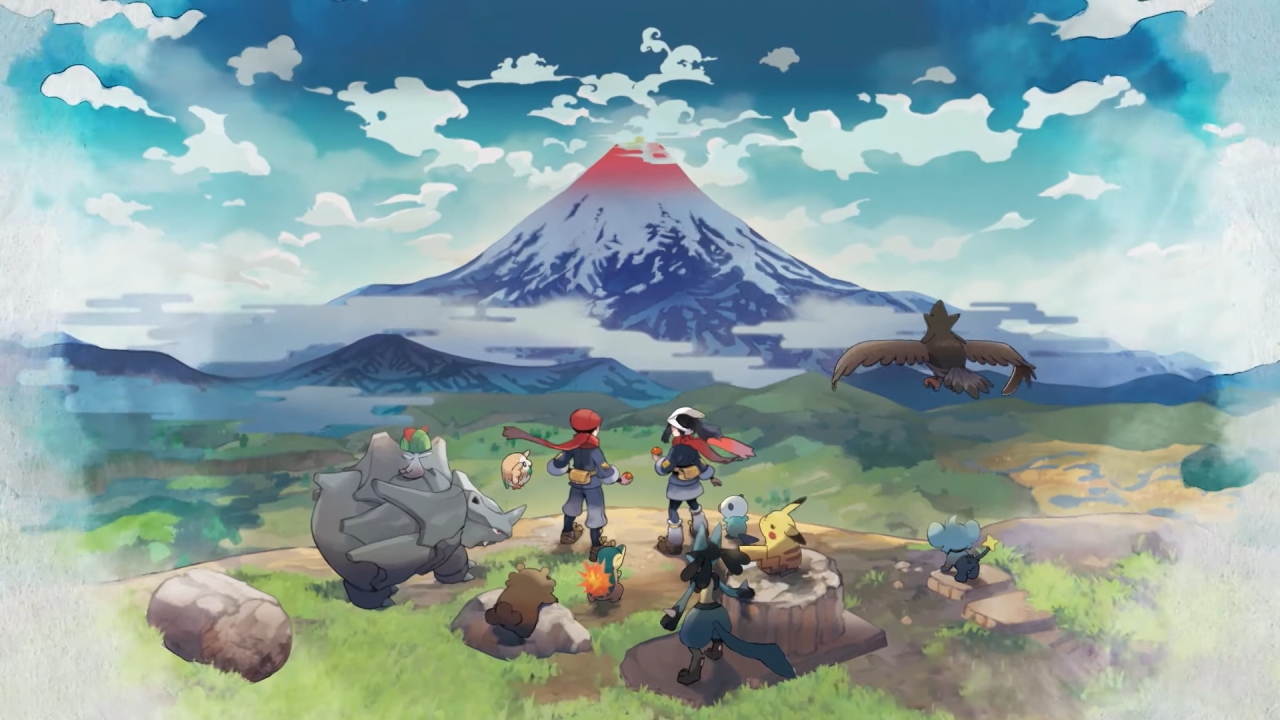
enter 2022, and i'm becoming acutely aware that it's been 5 years since i last played what was once an unshakeable favorite game of mine. i'm once again feeling the magnetic pull, and Pokémon Legends: Arceus comes close to reeling me in, with its charming premise of exploring a much less tamed wilderness and establishing roots that will lead to the games we all know and love. ultimately, though, it fails to pick up enough momentum in my mind for me to go for it - the first impression the reveal gives off is that this might be the ever-anticipated 'open world Pokémon' everyone's been begging for, but the actual game seems a bit closer to something like Monster Hunter, with a base of operations and several sectioned-off habitats. its emphasis on filling meters by catching and the resulting de-emphasis on traditional battling is enough to keep me at bay, although of all of these games i've missed, it's still the one i'm most tempted to perhaps take another look into one day.
i wouldn't have to wait long to get a game that delivered on what i'd been hoping for, though. the next big leap for Pokémon was coming sooner than anyone would have anticipated. some might even say maybe a little too soon.

only a month after the launch of Legends: Arceus, Game Freak released a rather bizarre trailer of a security guard stumbling through their HQ and finding mysterious physical artifacts inside. this was the announcement for the next mainline RPGs in the series, Pokémon Scarlet and Violet, set for a holiday 2022 release. right off the bat, heavy emphasis was placed on the game's open world nature - no Wild Area, no habitats, just one big explorable region. even with a bigger workload than ever, the gaps between generations of Pokémon have only gotten shorter, and my instant gut reaction was to worry that another game coming out so soon couldn't mean anything good. ultimately, though, Pokémon is Pokémon, and the more they showed off of these games, the more i knew, deep down, that it might be time to don the hat and backpack once more, and set out to catch 'em all.
right up until the last minute, i went back and forth on whether or not i should finally go for it, but for a number of reasons - including knowing that, no matter what, i could find something worth writing about within Pokémon, good or bad - i ultimately brought myself over any reservations and decided to pick up Pokémon Scarlet. now, 2,000 words into this, let's start talking about it.
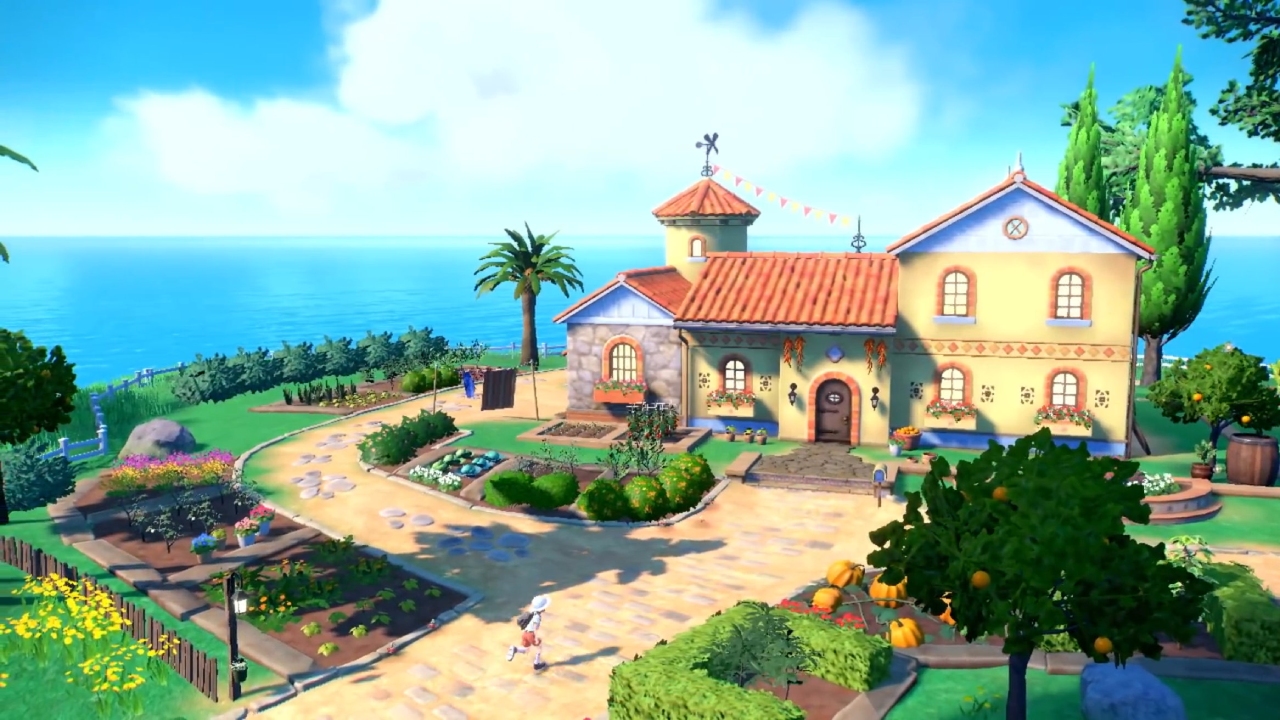
Pokémon Scarlet fits in perfectly on this site, because it heavily frontloads a basic rundown of what you need to know about what's going on before you're allowed to crack into the really good stuff. once you've designed your character, you're kept moving at a pretty tight pace - meet your battle-ready rival Nemona, pick one of Paldea's three adorable starter Pokémon, have a chance encounter with a mysterious and powerful lizard who loves sandwiches, and have the only person who seems to recognize this new species hand it off as 'your problem now'.
the game gives you your first taste of what's to come by letting you explore the area around the small town of Los Platos, and even when given only a small, narrowly designed slice of the game's world, it's easy to find yourself going on a few dozen little detours before making your way uphill to the central city of Mesagoza. for someone who's been entrenched in Pokémon my whole life and always seen people clamoring for the franchise to make the leap to a proper open world, this area left a pretty strong first impression. one thing that's immediately apparent is the variety of species the game is willing to throw at you - this may still be a game with a trimmed back Pokédex, but it uses all those slots pretty smartly to create thriving ecosystems all over Paldea.
i'm not always a huge fan of open world games, particularly when focused on outright scale and not a depth of experiences, but i find that Pokémon Scarlet hits a fairly solid balance. it's not the free-flowing physics playground of something like Breath of the Wild, but there is a solid sense of discovery in spotting different types of Pokémon out in the wild. plenty of species roam around idly, but they've sprinkled in just enough with unique behaviors to make the whole habitat come to life - as an early example, i immediately noticed how Bug-types would hang from trees, or how Bonsly, being an especially timid kind of Pokémon, would run away to avoid other nearby creatures.
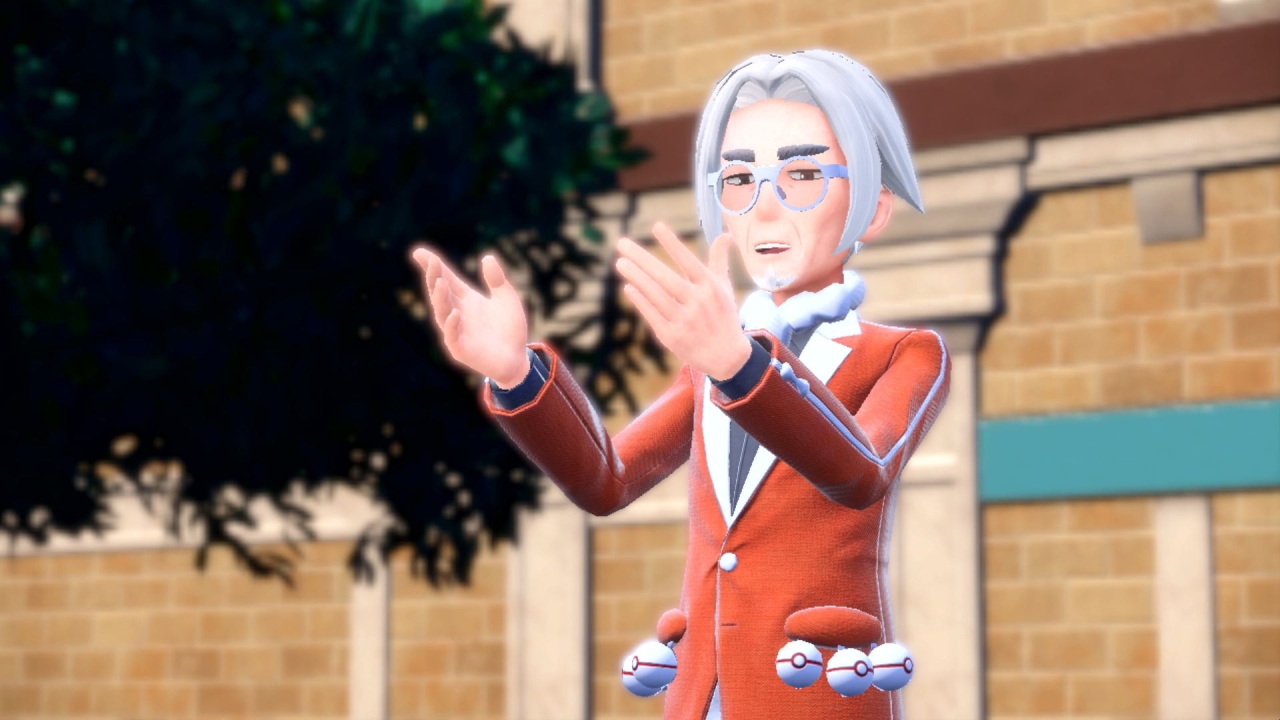
once you've finally managed to focus enough to head into Mesagoza, you're in for the second half of the game's expository introductions. long story short; your player character is attending the prestigious Naranja Academy (or Uva Academy, if you happen to be playing the other version in this pair) and it's time for the school's annual 'Treasure Hunt', an open-ended study assignment that essentially serves as this game's framing device to justify having a bunch of children scatter all over the country unsupervised to go on a grand adventure. the game gives you an introduction to its three main quest lines, each represented by a prominent student you'll have met during these introductions, and charmingly frames its signposting as two of them effectively arguing over who gets to be your BFF.
the most traditional of these quests is Victory Road, following the classic Pokémon formula of challenging the regional League to become the best trainer in Paldea - or, rather, one of the best trainers in Paldea. ever since Sun and Moon shook up expectations by framing its main quest as our first glimpse into how a Pokémon League actually gets started, it feels like Game Freak has continued to make sure each generation's take on the classic eight gyms and Elite Four leaves a bit of a different impression. in Paldea, 'Champion' is not so much a singular job title as it is a general label for a variety of trainers who've made their way past the League's challenge, including your rival, Nemona, who's already arguably the strongest battler in the region when you first meet her.
though her character may come across as somewhat one-note until some very late dialogue gives us a little more perspective on where she's coming from, i do enjoy Nemona quite a lot as a unique take on the rival archetype. i find that some people overstate just how important it is to have a real hatesink of a rival - really, that hasn't been a big deal since Johto - but it's hard to deny that any rough edges to the concept have definitely been whittled away when we now see them choosing the starter weakest to your own. Nemona really flips this 'friendly rival' trend on its head by having absolutely nothing to prove to you. she's already Champion, and she's openly holding back just to be able to nurture someone who might one day be able to give her a good match, simply out of love for the game.
overall, in terms of fulfilling its role as Classic Main Thing You Do In These Games, i enjoy Victory Road. continuing in the tradition of Sun and Moon's trials, each gym has a puzzle associated with it before you go on to face the Gym Leader themselves. the puzzles themselves aren't really anything that sticks out as impressive, ranging from a strange olive-bouncing obstacle course to a simple Simon Says minigame, but the Gym Leaders themselves more than make up for it, in my opinion.

if you've been anywhere near the Pokémon fandom in the wake of these games, you probably know about fan favorites like Iono, the Electric-type streamer who seems more concerned with how many viewers you can help her pull in than her duties as a League employee, or Larry, the Normal-type salaryman who's so steeped in his nebulously defined office job that he hardly has time to care about battling. of course these two are great, but really, i found something charming about pretty much the entire lineup. particular shout-outs to Grusha, an aloof Ice-type trainer who can't help but fixate on the injury that forced him to switch career paths from pro snowboarder to Gym Leader. it's a genuinely nice bit of characterization, but it also got me chuckling a little bit at the utter audacity of him saying - direct quote - "Let it freeze. Let it snow. Let it pile up on top of us.". like, holy shit, dude. you're in Pokémon. you fight 10-year olds for a living. i'd ask you to dial it the fuck back, but i actually kind of love it.
next up, then, i'll cover the other quest that parallels past Pokémon titles, serving as this game's take on the traditional 'villain team' terrorizing the region. ★ Starfall Street ★ (yes, the game always formats it with the stars and everything) is, at least in my opinion, by far the most uneven segment of the game, to the point where i often put off engaging with it until i absolutely had to. for starters, it has a much less intuitive hook than the other two main quests. Nemona wants you to get stronger by tackling the Pokémon League. Arven, who i'll have plenty to say about later, needs your help to find some mythical treasures throughout Paldea. ★ Starfall Street ★ is...
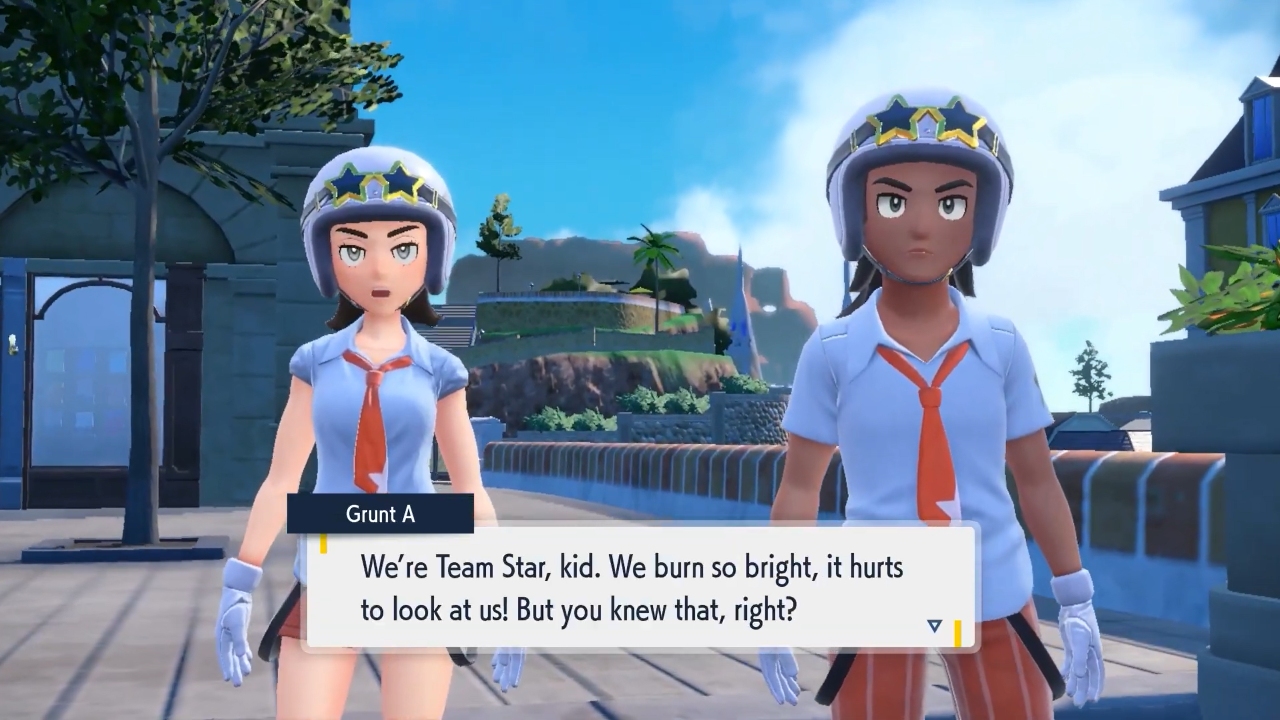
okay, so you run into this student, Penny, getting hassled by some Team Star goons. Team Star is a bunch of hooligans who don't want to attend classes, and this is the only time you see them outside of the five training camps they've entrenched themselves in. your phone gets hacked by a mysterious interloper, Cassiopeia, who definitely isn't Penny. Cassiopeia wants you to take down Team Star by having you go battle its five leaders, and along the way, you're also joined by Clive, a student who even more definitely isn't the school's elderly headmaster Clavell.
so, every time you want to go challenge one of these camps, you have to talk to Cassiopeia, then talk to Clive, then do all the gameplay stuff, then watch a flashback, then watch Clive talk to someone else, then talk to Cassiopeia again, and then talk to Penny. i suppose when you account for secret identities, ★ Starfall Street ★ has only two primary deuteragonists to keep track of, just like the other quests, but every conversation takes way longer than it has to as a result of all these spinning plates.
unfortunately, the aforementioned 'gameplay stuff' doesn't exactly made up for the hassle of engaging with Team Star. the first phase of battle involves sending your Pokémon out in a demonstration of this game's new Auto Battle systems, which allow you to continue moving freely while your team automatically handles opponents and comes back to receive healing. but Team Star challenges you to a gauntlet of completing 30 Auto Battles, and while i find the new system useful for situations like mowing through outbreaks of wild Pokémon or polishing off some level grinding, it falls way flatter when you're "challenged" to walk around, vaguely aiming your Pokémon towards the nearest opponent and stopping at vending machines if any meters get too low. it's not a type of mission that plays to the strengths of the new systems it's trying so hard to demonstrate.

the second phase of battle has you taking on one of the five heads of Team Star, and while i appreciate the concept of their massive personalized Starmobiles, each acting as a unique boss encounter with its own abilities and moveset inaccessible to normal Pokémon, these battles often felt like drawn-out bores rather than particularly exciting feats of strategy. this could be entirely subjective - it could easily just be that the particular team compositions i landed on were poorly built to face off with the bosses. at least in terms of my experience with these fights, though, i didn't walk away feeling engaged or satisfied.
the overall progression of ★ Starfall Street ★ is a bit of a mixed bag. it has, on paper, a plot i really enjoy - it's a story of a bunch of kids who effectively got bullied out of the school system and wound up with a reputation as villains once they decided to stand together to stand up for themselves. as someone who was, myself, very much a target for bullying as a kid, these seem like they'd be the most relatable characters in the game! unfortunately, though, i found the whole thing coming across a little muted under so many layers of secrecy and double-crosses and secret identities. by the end of the quest, everyone's still being so cagey that it's hard to tell if Team Star ever actually did anything 'wrong' or not?
when it all culminates in Penny - who, shockingly, is Cassiopeia and also the leader of Team Star - deciding that she regrets putting you up to the mission of taking her friends down, i get what the writers seem to have been going for. bringing Team Star down was necessary to keep them from getting expelled, but when it comes down to it, Penny cares too much about her friends to let you actually finish what she started. the only issue is that this all happens incredibly fast at the end of a plotline i was already growing a little tired of, and when you wrap it up by saying that one person was playing every side all along and that nothing of much importance happens to any of these people, it doesn't quite hit how i think it was intended to.
having gotten all my gripes with ★ Starfall Street ★ out of the way, though, it's finally time to talk about the best character in this video game!

the third main quest, Path of Legends, centers around Arven, that moody guy you met at the beginning who handed you control over the mysterious lizard Pokémon, Koraidon. at first glance, he's a bit stand-offish, especially when it comes to the matter of Koraidon, but actually, he's "all about that picnic life" and he needs your help to locate the Herba Mystica, a set of five mythical ingredients said to be a panacea for Pokémon.
from a pure gameplay perspective, Path of Legends is by far the simplest of the main quests, consisting of five encounters with some rare giant Pokémon that are, at most, mildly difficult. where it really shines, though, is in the rewards you get for completing it, both mechanically and textually. by eating a bit of Herba Mystica, Koraidon continues to unlock new abilities that'll allow you to traverse Paldea, such as climbing cliffs, swimming across water, or gliding through the air. Arven's hardly too happy about sharing his sandwiches with the legendary Pokémon, but as you come to understand, any annoyances with that are secondary to his real mission.

i will fully admit to the fact that i went into Pokémon Scarlet essentially primed for these exact plot beats, given the year i've been having. the real reason Arven is so concerned with getting his hands on the Herba Mystica is to heal his severely injured Mabosstiff. as someone who, themselves, lost an old worn-out mutt of a pet in 2022, how was i going to avoid crying when this big old friendly dog Pokémon finally manages to open its eyes, or get out a bark? even for as simplistic as Game Freak's cinematography sometimes comes off, watching Mabosstiff heal over time and the joy it brought Arven each time we snagged another Herba Mystica had me hooked. it's not often that i find myself playing Pokémon for its storytelling, but Path of Legends earnestly had me anticipating this game's character writing far more than the battles that were associated with it.
on top of having by far one of the most heartwarming subplots in 26 years of Pokémon history, Path of Legends also manages to weave its central mysteries in much more smoothly than ★ Starfall Street ★ did. we find out early on that Arven is the son of renowned scientist Professor Sada, a woman who also took care of Koraidon, once. as Arven comes to trust the player more, he opens up about how his mother all but abandoned him in pursuit of her work, leaving some resentment that only grows stronger as Sada seems to keep both of you at arm's length and asks that you complete some strange errands for her.
the pay-off for Arven's story becomes available once you've completed all three main quests, but now seems like a good time to break away from recapping so i can touch more on the moment-to-moment gameplay of Pokémon Scarlet. once you're out of the introductory sequences at Naranja Academy, the world is your Cloyster - any of the three main quests can be pursued in any order you want, mixing and matching along the way. this unprecendented level of freedom for a Pokémon title is somewhat tempered, however, by the game's difficulty curve. all your opponents have their levels set in place with no scaling, so there is something of a 'correct order' you can try to follow, and the game does little to guide you on this path outside of some vague mentions in the map screen about who has a reputation for being stronger or weaker.
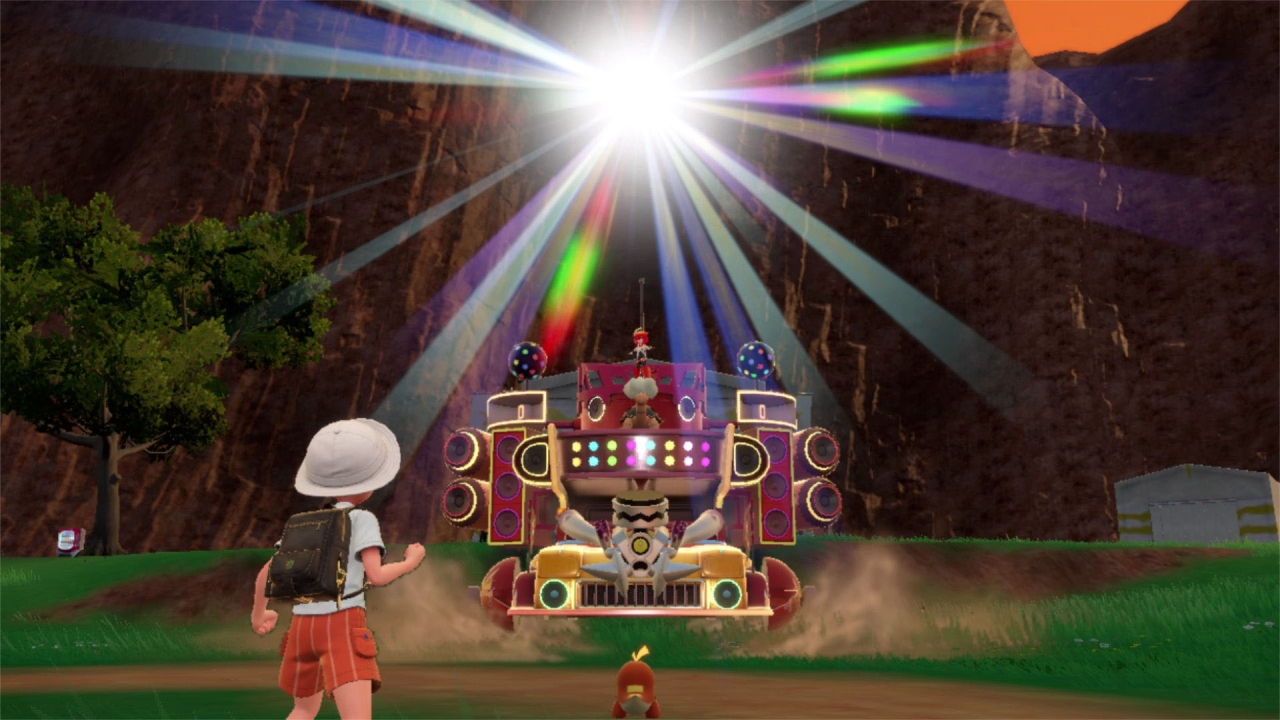
having so much freedom to tackle much stronger opponents, in theory, puts this game's difficulty curve into your hands. in practice, though, the way Pokémon's battle system works rarely allows for dramatic gaps, outside of niche strategies like using the classic Focus Sash + Endeavor shenanigans. personally, i found these games to be a reasonable challenge, even wiping out a few times against some particularly tough opponents such as Larry's team of Normal-types, but i definitely had to put in a bit of effort to keep the game where i wanted it, both by looking at external guides on what level my enemies would be at, and by cycling my team out more often than i used to, to avoid overleveling any of my Pokémon. Pokémon Scarlet is very much what you make of it - sandbagging for a tougher experience is fully possible, and so is building up enough momentum with your core team to walk all over any foe, if that's what you want to do.
aside from the main loop of raising your Pokémon and getting stronger, one of the other ways the scope of the game grows as you continue playing is in navigation. as mentioned earlier, each Herba Mystica you find grants Koraidon a new traversal ability, and even the more basic ones like a higher jump or a sprint feel like meaningful milestones in how you're able to interact with the world. a ton of the joy in this game, to me, was being able to become more and more mobile, finding new habitats and discovering what species of Pokémon lived there, or locating cleverly-hidden TMs, scattered in every little corner you can think of and often times with some kind of clever connection to the location in which they're located, such as finding Power Gem atop mysterious crystals, or Heat Wave out in the desert.
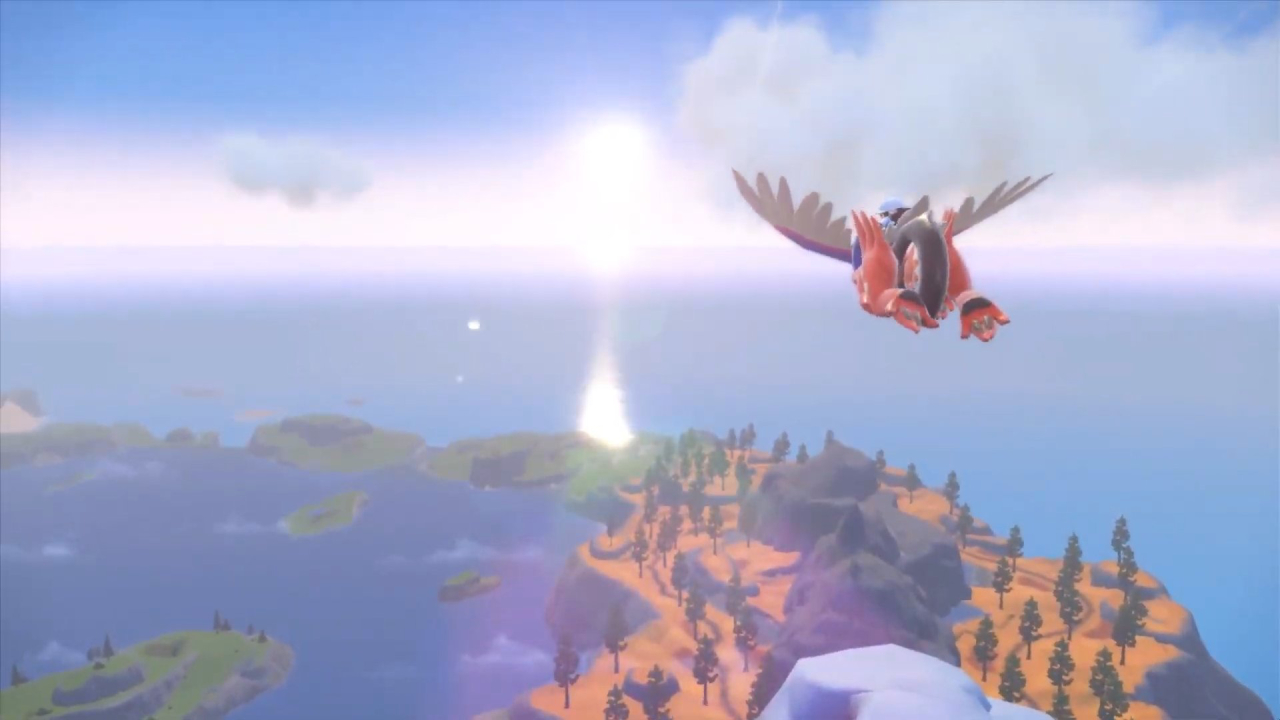
not only does the act of exploration feel fun and rewarding, but there's a pretty surprising amount of locales packed into a relatively tight overworld. there's a handful of open plains early on that might feel a little same-y, but Paldea is full of memorable sights the more you branch out from your humble beginnings in Mesagoza. the east side of the region has a thriving seaside city and a vast open quarry, the west side has a town carved out of a desert oasis, and the north has some of my favorite locations in the game, such as mountain passages, a massive lake, and a strange, cozy, autumnal corner full of fittingly falltime-y Pokémon.
the location that stands out to me perhaps the most, out of personal experiences, though, is the southwest corner of Paldea. there's a high-level Gym Leader in the town of Alfornada here, and the game cleverly raises the whole area up on a bit of a plateau, making it a hard trek if you haven't unlocked Koraidon's ability to scale walls yet. so, when clearing out the region, i simply took a little scouting trip to see if there was any other way in. lo and behold, i found an expansive rocky path off the coast, barely visible from the aerial view of the map but absolutely giant once i was standing at the bottom of it. following the path up, i found an entire cave system full of rare Dragon-type Pokémon, and after trekking in deeper, found that it led straight out into Alfornada.
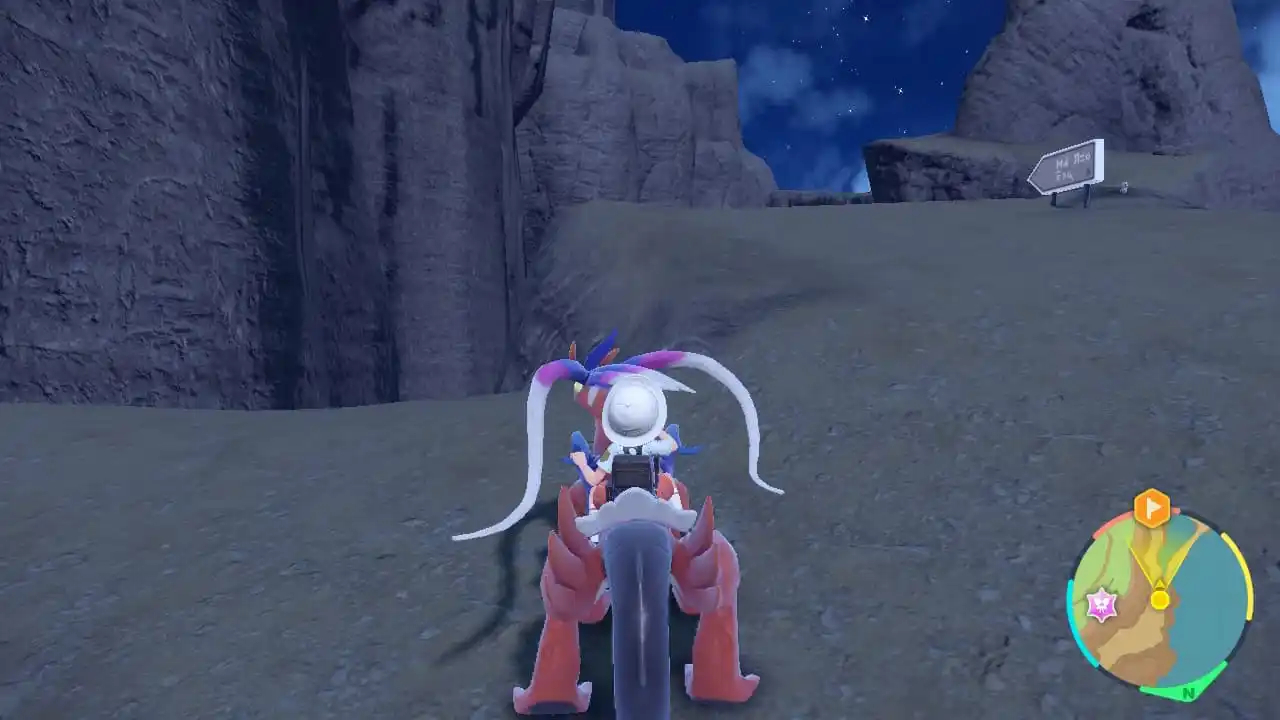
i might be describing it a bit dramatically, but it really was a whole little moment i had playing this game. i can't remember the last time a Pokémon game evoked that specific type of feeling in my brain, of stumbling upon some less-travelled road and making my way through an area that felt like its own little self-contained secret, something i could have missed entirely but was rewarded for poking my head into. for someone who sat out 6 years of Pokémon, in no small part due to a lack of experiences like that, it felt like a breath of fresh air, and it was hardly the only time i got a bit of that thrill out of this game, whether it was dodging hordes of lightning-fast Veluza while swimming the northern Paldean sea or happening upon a bamboo grove brimming with powerful Bug-types.
again, though, maybe Pokémon Scarlet is what you make of it, because for as much unexpected fun i found in traversing the wilderness of Paldea, there's a noticeable lack of depth in other areas. towns and cities have been heavily de-emphasized as hubs of activity due to the removal of pretty much all explorable interiors, and i'm still sort of trying to figure out how i feel about this. i definitely don't think it's a complete net positive, because Pokémon has a long history of inexplicable weirdos cooped up in some corner of some building. i am, at the very least, open to the idea of having these types of characters exist freely out in the open, but Pokémon Scarlet misses the mark a bit, with nobody as memorable as oddballs like Bill or Mr. Bonding. oh well, at least these games still have a 'technology is incredible!' guy right outside your house.
if you want this game's inexplicable weirdos, you'll have to return to Mesagoza to participate in some actual-ass school. this is a feature i hardly even realized was in the game up until about halfway through, but there's classes at Naranja Academy, meant to help teach the player about a whole plethora of mechanics, whether it's obscure evolution methods or the math of calculating a critical hit's damage. the act of going to school in a video game is about as exciting as you'd probably expect, but these sections still proved themselves to be incredibly worthwhile, in my opinion, because of the lovable cast of weird teachers at the academy.
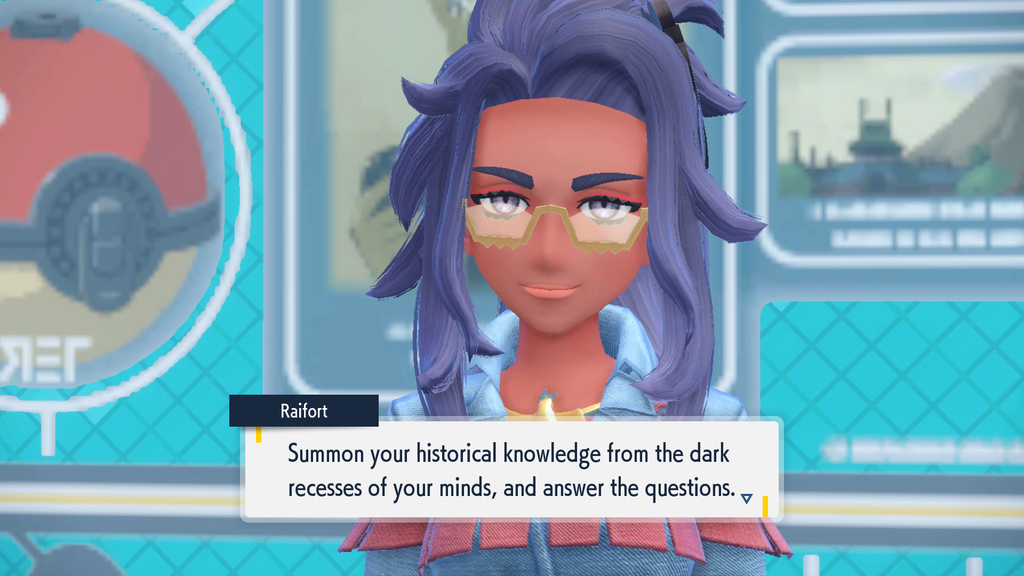
while a cynical first impression might have been that characters like Dendra and Saguaro would be mostly forgettable beyond a chokehold on all fanart for the next three years, i actually ended up loving pretty much the entire cast of characters you can meet inside Naranja Academy. my personal favorite is Raifort, your very rude history teacher who gets pissed off at having to teach you things that happened only 10 years ago (ugh, that's like, practically today), but the whole cast is worth checking in on between your big adventures. yes, having to do midterms in a video game isn't the most engaging thing, but trust me, you'll have a good time watching Dendra learn how to cook, or helping the school nurse get the confidence to finally apply as a teacher.
on top of introducing you to a fun supporting cast, the Naranja Academy classes also serve as a way to keep any tutorializing out of your hair - it's there if you need it, but if you know how to do all this already, congratulations, you're free to go play Pokémon. even previous games i loved, like Pokémon Sun, had a distinct knack for constantly getting in the player's way with this type of guidance, so incorporating the academy does a ton to help offset the balance between teaching the player and being overly obtuse.
even for someone who's been playing Pokémon their whole life, some of these classes have their usefulness - Saguaro's home ec class, for example, is an good introduction to this game's sandwich systems, a term which i'm absolutely delighted to be able to type. ever since the leap to 3D, Game Freak have put a lot more emphasis on systems that allow you to interact with your Pokémon and treat them well, and for this game, this takes the form of picnicking, which also doubles as this game's on-the-go replacement for the classic Daycare. similarly, having little 'powers' you can deploy as temporary buffs has been popping up in all kinds of forms since X and Y, and for Generation IX, this takes the form of a sandwich-making minigame.
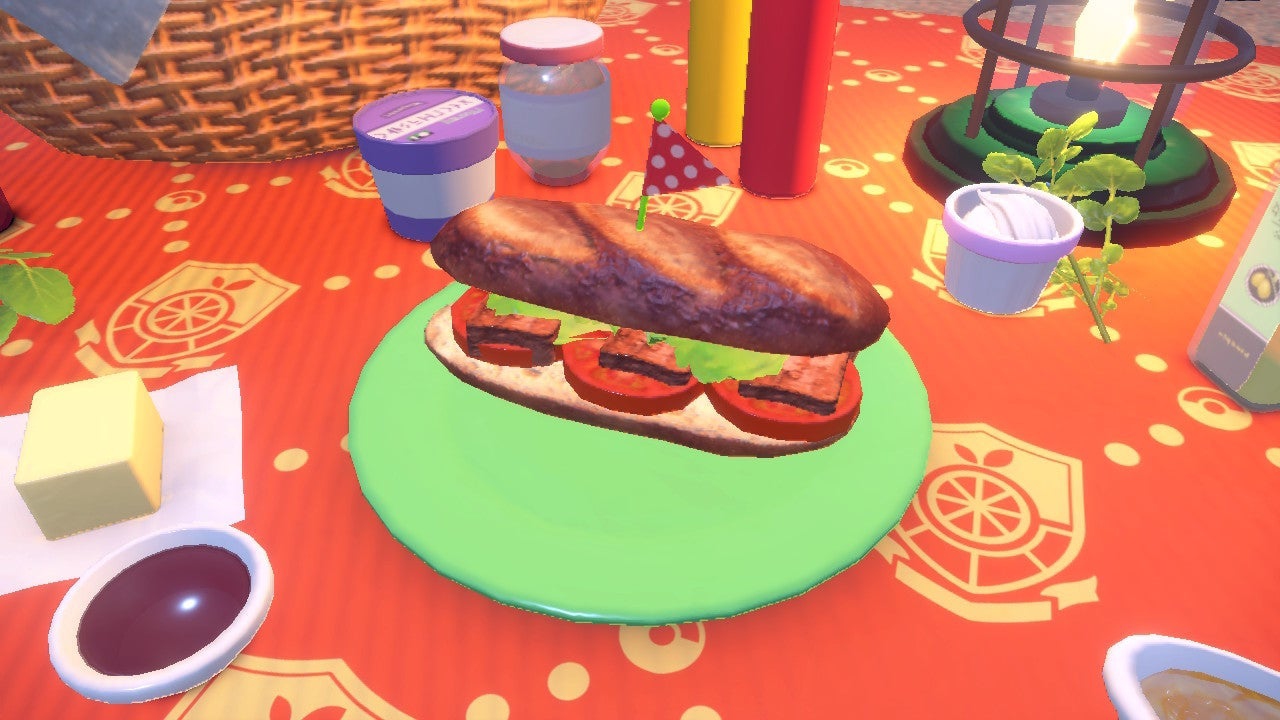
it's easy to poke fun at the jankiness of the sandwiches - how you have to drop ingredients on carefully from several feet above the bread, how things shuffle around like Garry's Mod props at the slightest nudge, the rather... minimalist...? animation choices for how your successful sandwich is enjoyed by you and your team - but honestly, i'm just endlessly charmed by the whole thing. it's a suprisingly deep system that even the fandom's foremost experts have yet to fully crack into, as of this writing, with people still discovering how to min-max your fillings to unlock certain buffs.
and, of course, obviously, just like in real life, getting some friends together means bigger bread for better min-maxing. on top of its open world structure, Pokémon Scarlet is dabbling in another ambitious first for the franchise, in the form of live, moment-to-moment co-operative play. i haven't had much time to sample co-op, outside of a few brief excursions with friends to round out my Pokédex and test the online connectivity, but if i had to describe it in a word, both from my hands-on impressions and the vibe i get from others, i would say it's 'cute'. not groundbreaking, or game-changing. but indeed, very cute.

up to four players can co-exist in a world together, and i personally find that there's certain areas that have exceeded my expectations and others that are more lacking. right off the bat, the game doesn't leverage co-op to do much with battling - you can't challenge NPCs or wild Pokémon together in double battles, and a bit of research tells me that while the game does prioritize matching you with people in your own co-op session, you do have to manually go through the online battling menus to go head-to-head rather than simply walking up to your friend in the world and challenging them. on the other hand, there's no distance limit or story-gating while in co-operative play. hypothetically, you and three friends can all complete your journey together at the same time within the same instance of the Paldea region, even if your impact on one another's experiences might be low.
once again, i think this comes down to a case of Pokémon Scarlet being what you make of it. it's easy to look at the whole co-op thing rather cynically, but i also see a lot of opportunities within it, even if they aren't the most obvious mechanics that 'co-operative Pokémon' implies at a first glance. even only playing for a few minutes, i've found a lot of charm in comparing teams with my friends, and while playing alone, i've pondered perhaps doing some impromptu hide-n-seek or racing with how many mobility tools the game offers.
aside from open-world antics and the usual suite of online features to pair you up with trainers around the world, the main form of multiplayer in this game is Tera Raid Battles. Terastallization - which i have somehow gone this whole article up until now without mentioning, what the hell - is this generation's seemingly prerequisite battle gimmick, allowing Pokémon to shift to a third type and receive certain offensive and defensive benefits for doing so. while most Pokémon caught in the wild will default to having one of their existing types as their Tera Type, entering a raid den allows you to encounter Pokémon with strange new combinations and receive both the satisfaction of catching them and a variety of other useful rewards.
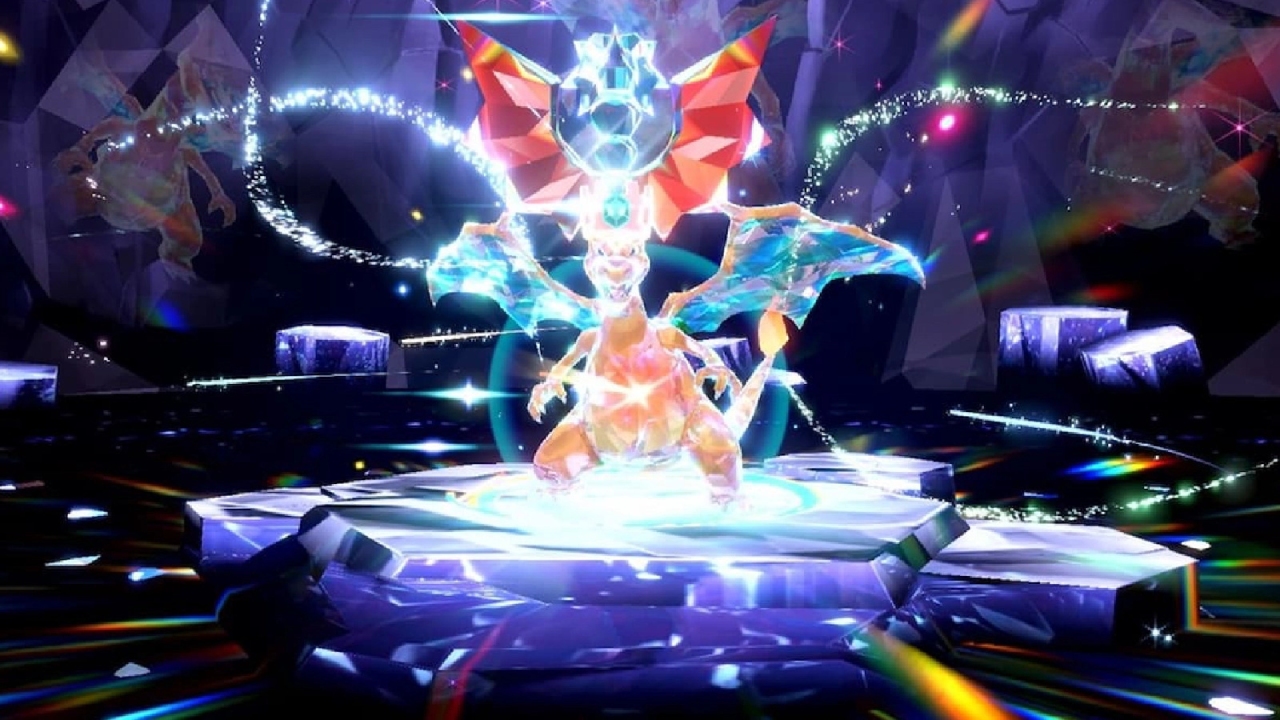
my experience with Tera Raids has been a heavily mixed bag. on the one hand, it provides a fun twist on Pokémon battling by pitting four trainers up against a single 'boss', forgoing the usual turn-based pacing to let everyone go all out. the unfortunate thing, then, is that it seems like the game has trouble keeping everything in sync, sometimes. especially as you climb the ranks towards the coveted six-star raids, a single mistake can spiral into a full-on waste of time as your Terastallized target simply decides to launch four debuffs at you while the timer's still ticking down and getting cut in half with each KO.
i won't pretend i'm above getting a little salty - a lot of this could genuinely be that i'm misplaying. Raids are hardly universally bad, and provide a lot of useful functions, whether it be providing endgame-grade sandwich ingredients or allowing me to handily catch some of the opposite version's exclusive monsters. when everything clicks, there is something very satisfying about co-operating as a team to manage our health as a collective resource and strategically exploit a tough Pokémon's weaknesses. the pieces are all there, but the consistency of that good experience is lacking.
having covered the three major plotlines and dived into a taste of what your adventure might look like between major milestones, now seems like as good as any a time to talk about Pokémon Scarlet's 'true ending' - The Way Home, a self-contained fourth questline that ties the game's major threads together. having proven yourself a Champion, helped Penny resolve the Team Star fiasco, and lent Arven a hand in healing Mabosstiff, your final challenge is to trek into the off-limits Great Crater of Paldea to deliver Professor Sada the key to her important research in the form of her beloved Scarlet Book.
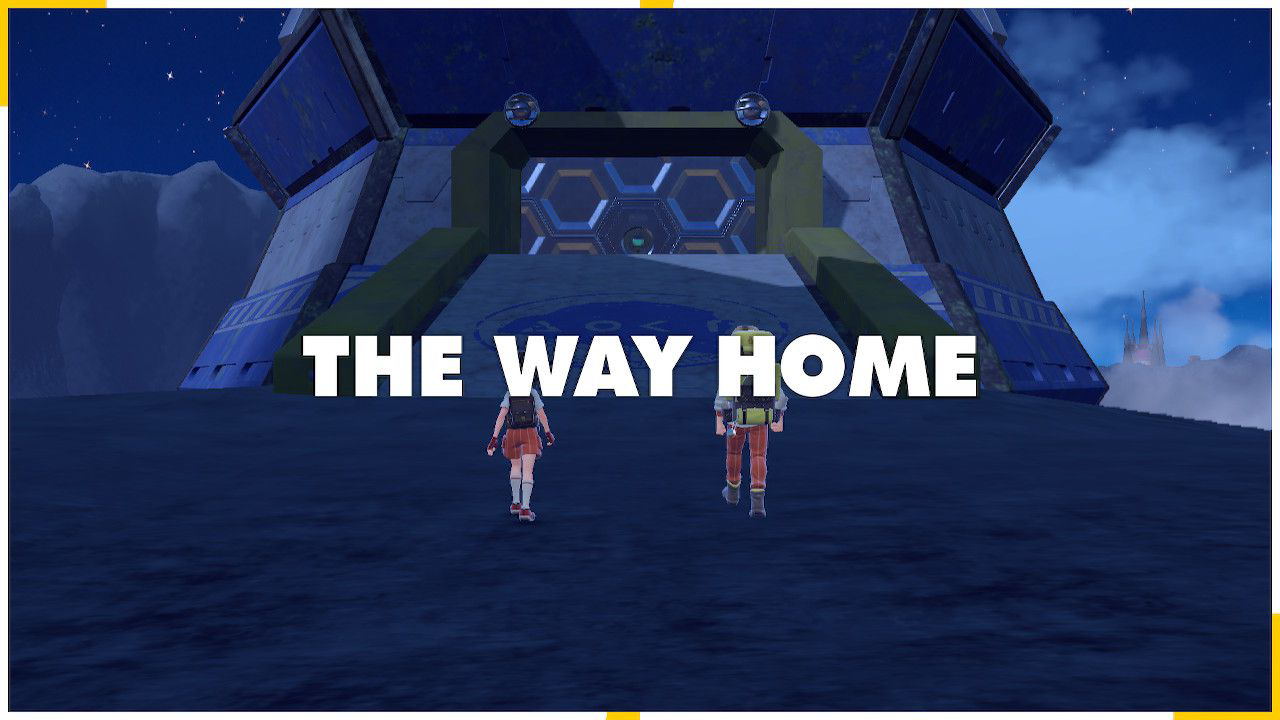
while this quest is much shorter and more linear than your main journey through Paldea, it reaps the rewards of having set up such a fun cast of supporting characters by finally bringing them all together. for as much as i was soaking in the eerie, ethereal vibes of Area Zero, i was also having a great time getting to watch Nemona, Arven, and Penny finally share scenes together, getting the opportunity to play to each other's strengths as characters and share interesting new information that helped contextualize their presence in this story. for example, this is where we finally get some of that depth out of Nemona - in response to Arven getting to talk about his strained relationship with his mother, she finally elaborates on her own family situation, about how she comes from a place of privilege, and has been essentially allowed to fully devote herself into her interest in Pokémon battling because her unseen older sister is expected to carry the torch for the family business.
having a full cast with you as you uncover the mystery of what exactly Sada's been neglecting her kid over only heightens the excitement of unraveling this game's climax. for a series of RPGs, i feel like Pokémon actually has surprisingly few sections where other human characters get to just co-exist and bring their own baggage to an active situation, as people tend to do. while i think it's best to deploy this type of storyteling sparingly, it's refreshing to see here. for a long time now, these games have been trying to tap into the feeling of having a close-knit group of friends in your travels, and i feel like Pokémon Scarlet finally actually sticks the landing.
and that baggage comes in all forms - while Arven's obviously the most directly connected to the situation at hand, and finally lets on why he has such a grudge with Koraidon, Nemona's immediate conclusion that the second Koraidon living in the crater must be friendly and looking for a 'family reunion' of its own ends up putting the whole group in jeopardy, and her new-found friends aren't afraid to call her out on having such a narrow mindset when she still insists things will be fine after a fight breaks out. even with just its three main quests, i would gladly say Pokémon Scarlet has one of the best casts in the series, but when put together like this, when allowed to actually be wrong about things and have friends that help them overcome their flaws? it's honestly a little astonishing how much the writing of this game has improved compared to its predecessors.
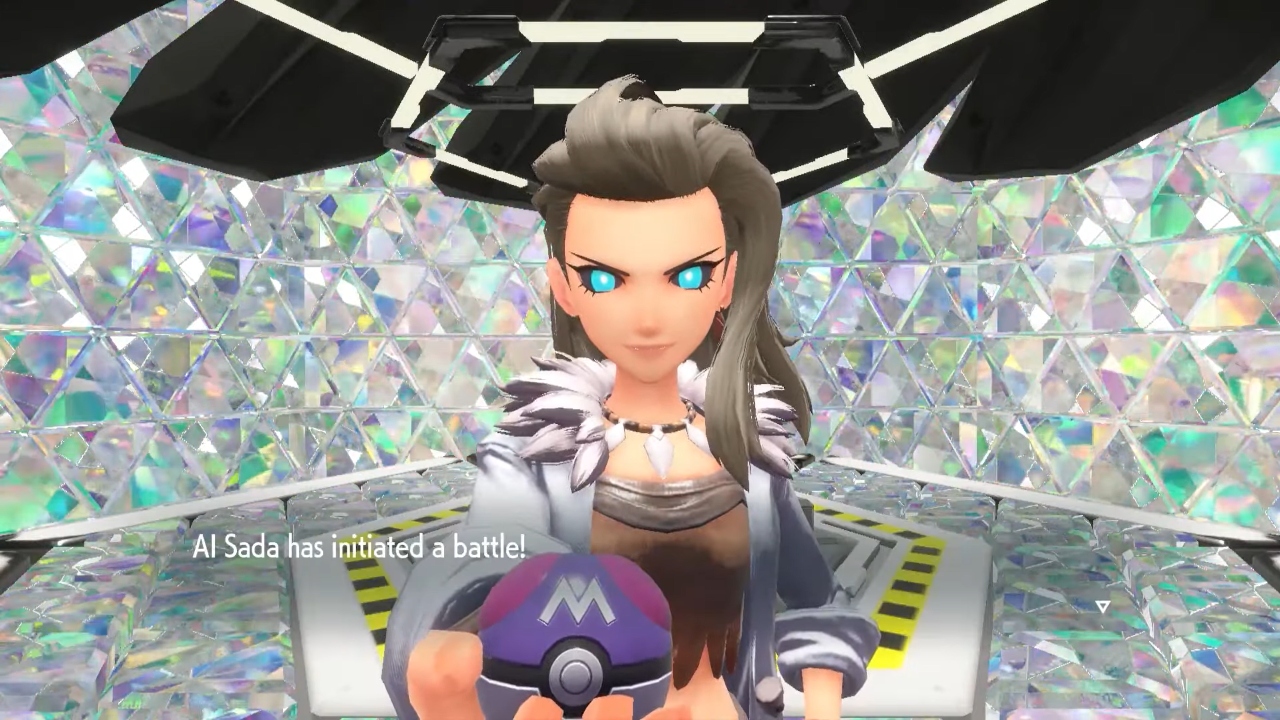
eventually, the truth of the matter is all laid bare for you, to the point of having a literal list of pre-set questions you have to ask your way through, in order to set the stage for the game's final boss. the real Professor Sada laid down her life to protect what is now your Koraidon - potentially having died right before you started your quest, depending on how you choose to reinterpret the opening cutscene of it fleeing into the wilderness - and the Sada you've been interacting with this whole type is a robotic duplicate meant to keep her time machine running. the AI, however, has learned to make sacrifices its creator couldn't, and, in the interest of preventing prehistoric Pokémon from devastating the ecosystem of Paldea, needs you to override its security measures (by way of Pokémon battle, of course) to shut it down. what follows is one of the coolest and arguably most dynamic boss battles in franchise history, incorporating dialogue from all your companions, clever meta-textual usage of the game's UI, and a track that goes so hard that it has to have been the handiwork of guest composer Toby Fox.
when all is said and done, when Koraidon has regained its confidence and strength and the crisis has been averted, Pokémon Scarlet unexpectedly manages to make these last minute swerves work, weaving them deep into the nature of this story's message. all three of the main quests have emphasized this point, and the game's very own nature as the first proper open world Pokémon title almost feels like it had to happen to make this concept land as hard as it did.
the whole point of Naranja Academy allowing its students such freedom has been to let them find what truly matters to them, and you've helped three of its brightest students, reaffirming their sense of belonging in this vast world. Sada was a woman who knew what mattered to her, but lost sight of everything else in chasing that dream, and her robotic doppelganger has been shackled to her lab, unable to do anything but maintain the late professor's work. the act of stopping the time machine is also inextricably linked to granting that doppelganger her own freedom, as she gets sent back in time, past a point of no return but with nothing but excitement for what that one-way trip means. her last words of "Farewell, my free adventurers" really drive home what the point of all of this was - if the story of Pokémon Scarlet is about any singular thing, it's about finding that path to personal, emotional freedom, to being your best self.
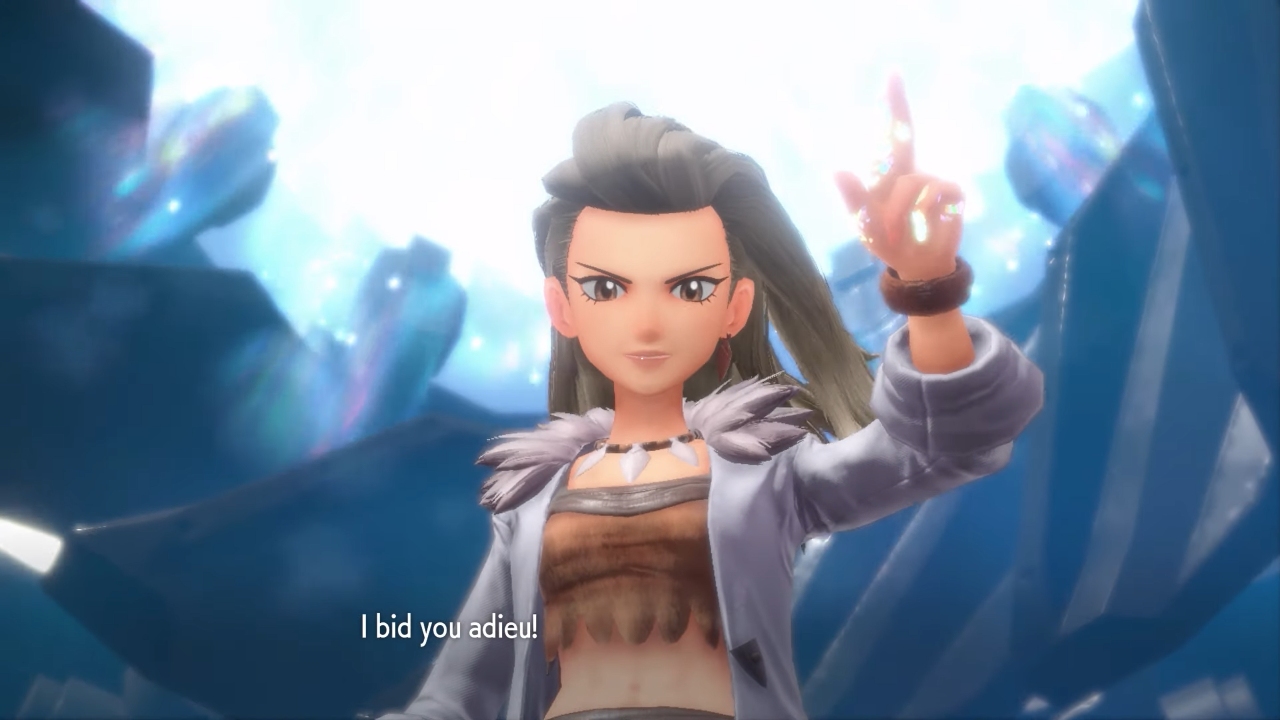
as you escape the collapsing laboratory and come back to the surface, Arven is, quite understandably, not doing so great, having just been put through an emotional wringer by a robot imitating his dead mom. it's Nemona who comes through in lifting the group's spirits, suggesting that they take the long road home and seeing what it might hold. Pokémon has had good stories in the past, without a doubt, but the catharsis there is generally one of a journey coming to a close, of having made your way to the very top. Scarlet, then, really hit me with some unexpected emotions, as it puts forward a different kind of catharsis - friends pulling one another out of a bad funk, and a feeling that a journey's just beginning.
and then those rat bastards hit you with some Ed Sheeran. they really got me saying nice things about a game that contains Ed Sheeran? goddamnit.
Pokémon Scarlet is, without a doubt, one of the most ambitious games in the series. it is one of the most thorough reinventions of the formula yet, fulfilling the long-standing wishes for an open-world Pokémon title, being willing to forgo many staples of these games' traditional storytelling structures in the interest of giving you an adventure that can be experienced in just about any order the player decides they might want to experience it in, up until its endgame. on a mechanical level, it shifts Pokémon's paradigm from random encounters to more natural habitats that you can interact with in various ways, and rewards exploration after years of the series having sidelined it.
it is also, unavoidably, probably a little more scuffed that you'd hope for it to be, coming from one of the highest grossing media empires on the face of the planet. i've kept it at bay about as long as i can, in the interest of covering what this game does so right without having to constantly chime in and throw you back and forth between tones, so consider this the part of the piece where i lay it all out there about what could be done better.
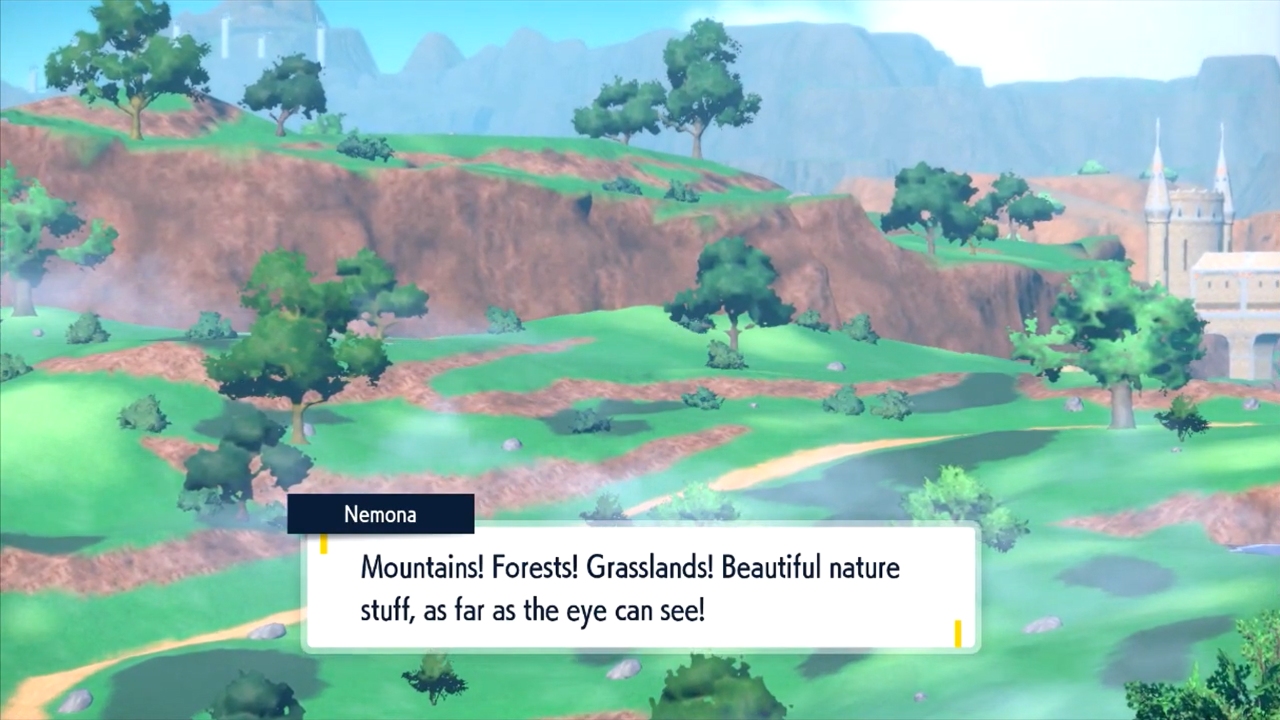
i, generally speaking, do not consider myself a graphics snob. i enjoy high fidelity graphics when they're available, sure, but all the fidelity in the world won't do you any good without a solid artistic direction, and, vice versa, i can totally get down with an unpolished gem if i feel like it has an appealing aesthetic. i don't feel like i'm owed much in terms of specific benchmarks that games 'need to' hit, and the most important technical aspect i can ask for is consistency. Pokémon Scarlet is, unfortunately, a little all over the place in all these areas.
artistically speaking, the game's aesthetic... is Pokémon. it feels like a bit of a known factor at this point. there's a nice variety of environments and a plethora of great creatures, but the disconnect comes in how these things are rendered. Pokémon receive plenty of attention to detail, with some fantastic use of material shaders and a much more vivid palette than the muted watercolor imitations of the 3DS era. that variety of environments, however, isn't quite done the same justice, with repeating textures sometimes dulling the impact of a sprawling field or massive cliff, and pop-in running rampant all over the place.
the framerate has also proven to be an issue for many, in more ways than one. i haven't run my own measurements and the exact numbers seem tied to a myriad of factors, such as when your console was produced, what storage the game is being run off of, how long the game has been open, cycle of the moon, etc., but even as someone who feels like they had a pretty positive experience with the game, we're judging on a scale of Could Be Better to Yikes here - there is no magic combination that makes this game run at the same benchmarks as its late-stage Switch contemporaries. not helping this, then, is the game's aggressive optimization technique of making sure anything more than a few feet away from the player runs at a chopped framerate, leading to some very visible NPCs that very visibly move at a fraction of the game's already low rates.
there are worse issues lurking under the surface for some people too, such as the infamous .gif of the entire world loading in chunk by chunk after a Poké Ball throw, or the ever-dreaded crashes and memory leaks. i, for full transparency, will say that i've encountered two major, genuinely game-halting issues like this, in what might be hundreds of hours of play. once, early on, the game seemed to get completely stuck loading in a gym puzzle and i had to manually restart the application, and much later, having fully beaten the game, i experienced a crash, complete with error message, while roaming the streets of Levincia, seemingly unprompted.
i always find it hard to talk about technical issues such as these, because i really do want to extend good faith to people who had their experiences disrupted much more than i did. if, by some streak of unluckiness, the game crashed on a regular basis and made it hard to keep progressing, then that's your experience with the game, and unless you say something that just literally couldn't be true, i'll try to respect your right to say this game was 'unplayably bad'. i, however, am mostly just speaking about my own experience, and my own opinions, and as far as i'm concerned, the game's biggest flaw is that it could be prettier, which is hardly a dealbreaker for me.
it gets harder to keep reading these types of critiques in good faith, though, when it seems like the graphical performance is the end-all be-all Thing about this game, even for those who had no major issues or who haven't even played it. i don't put much faith in numerical scores (especially given games media has become entrenched in a decades-long shrinking of the scale, to the point where a 7/10 score comes across as alarming to a lot of players), but it's impossible to deny that Pokémon Scarlet and Violet were met with a noticeably lukewarm reception from both critics and fans alike, primarily over the games' lack of technical polish.
this criticism left me pulled back and forth on whether i was going to dive into this game for a few days until i finally decided to go for it. the picture being painted was that, yes, these games were rough around the edges, but almost entirely in areas that i was willing to live with. so, i looked for critique that focused on whether the games were fun or not, and found... really, not much of anything. any review, amateur or professional, seemed like it had to constantly couch any praise in a bit of "but shame on this game for looking so bad" rhetoric. heading to Twitch to see live gameplay seemed like it might do the trick, but then again, streamers are entertainers, and when your live audience is constantly waiting for the opportunity to take potshots at the game's flaws, the overall tone of the entertainment very visibly shifts, as i saw many streamers dance back and forth over the line of "it's fun, though" and "wow, what were they thinking, am i right, fellow gamers?"
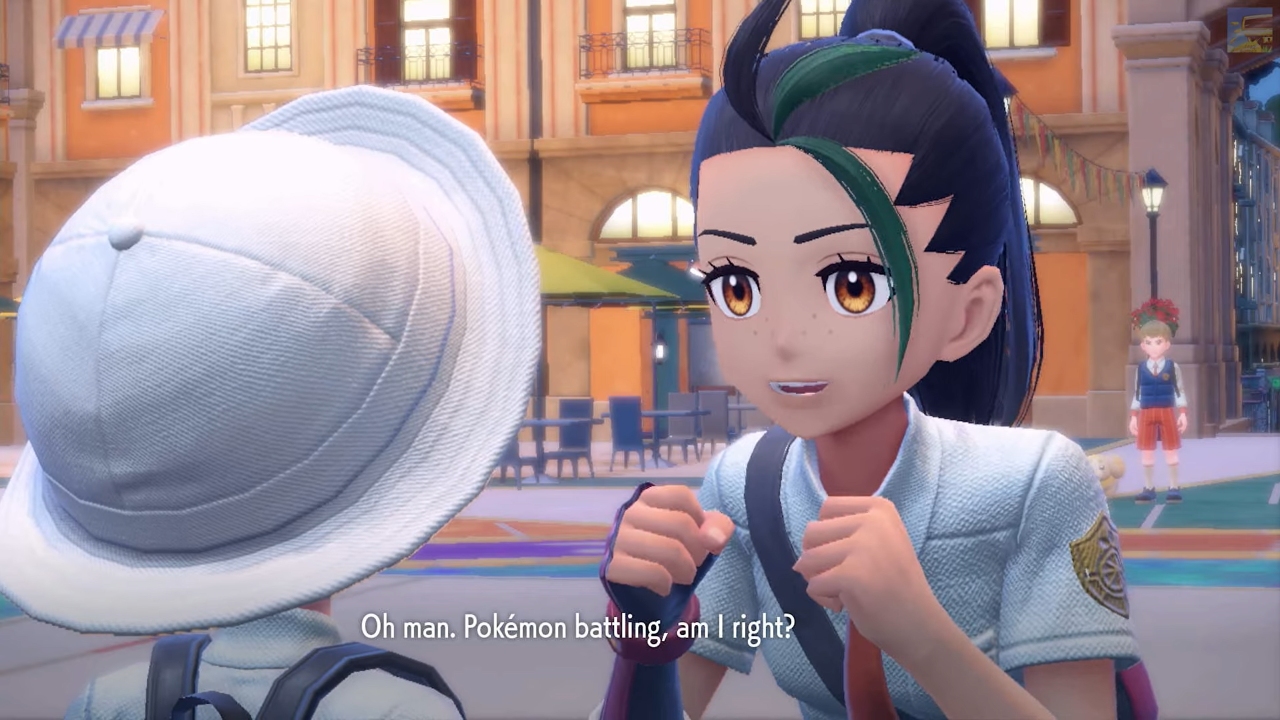
a particularly pervasive criticism, tying both into this game's rough state and my praise of its storytelling, was the lack of voice acting. many cutscenes seemed staged in a way that perhaps implies that voiced dialogue was in consideration, noticeably switching their presentational style, but none is present. for some, this is outright unacceptable. to me, though... i'm fine? people point to examples like Nintendo contemporaries Zelda or Xenoblade, or to Pokémon's own anime for how 'easy' it would be to implement this, but these comparisons only leave me feeling colder about the idea, because i don't find either of those things to actually have very good voice acting...? this, to me, feels like a microcosm of a lot of discourse around this game - this stubborn sense that it's 2022, and therefore Pokémon simply should have voice acting. doesn't matter if it'd be good or not, just that it's something other games have that it doesn't, so clearly Game Freak doesn't care.
i'm not just bringing all this up to blame people for expecting more out of this game, though. Pokémon is an absolute juggernaut of a franchise, having pulled in more profit for its creators than a certain Michael Mouse in only a fraction of the time. it's easy to go in circles talking about Game Freak and The Pokémon Company and who bosses who around, but the bottom line for people is that there's a sense that Pokémon, with more money and pop culture cache than basically anything else on Earth, should be able to aim higher than this.
a narrative i see popping up a lot in the wake of Scarlet and Violet is this idea that Game Freak could put out literally anything and fans would play it. there's definitely something true about some part of that statement, but i think where i find myself at a bit of a disconnect is in wondering why this game in particular is the breaking point for so many. in my mind, Game Freak has tested the theory that they could 'put out anything' and be fine - that test was called Pokémon Sword and Shield. i skipped it, just like i skipped multiple games before and after it, because believe it or not, i do have standards.

Pokémon Scarlet, for all its flaws, doesn't feel like it was made by a team that doesn't care about their output. if they really wanted to, they could have released another very standard RPG in their usual house style and been fine - Sword and Shield were the best selling games in the franchise in almost 20 years, and critics were more than happy to reward it despite its lack of ambition. the fact that their newest title does run so roughly speaks to the fact that, despite their intensive deadlines, they had an ambitious vision for what Pokémon could become. when i drifted away from Pokémon, it was out of a sense that these games were moving in circles, that we were getting more and more trimmed away in service of a creative vision that didn't seem worth all that sacrifice. Scarlet and Violet certainly make compromises, but for the first time in six years, i feel like those compromises are being made to better deliver on something fresh and exciting.
up until Scarlet, having Pokémon running in 3D almost seemed like more trouble than it was worth. X and Y were a bit of a shock after the breadth of side content offered by games like Black 2 and White 2, but it was easy to rationalize, because there was a technical debt to moving the entire Pokédex over to a new, ostensibly future-proofed set of 3D models. as the years went on, though, it never felt like Game Freak cracked the code on developing in this format, and that technical debt always got a little bit larger, while the actual game design still felt like it could have been executed just as well in their humble pixel art roots.
for the first time, with Pokémon Scarlet and Violet, i can wholeheartedly say that these games don't feel like they could have been made for the DS. you could try and adapt Paldea into a two-dimensional format, you could attempt to wrangle its level of exploration into a more classic structure, and you could write all these charming characters just as well, but it would be a substantially different experience altogether. talk about rough edges all you want, but this is not a game built by people who have nothing new to bring to Pokémon.
this all isn't to say that Game Freak is without flaws, or that it's wrong to expect more out of Pokémon. i may have more tolerance for jank than some, but even i can lament the fact that, yeah, it's easy to get wistful about what Pokémon Scarlet might have turned out as if given a few more months for a crucial layer of polish. the contrast of having a team as small as Game Freak as the lynchpin of an unstoppable multi-media empire that demands a yearly schedule of new content to feed into its many hydra-like heads is stronger than ever.
many don't seem especially hopeful about things changing anytime soon, given the financial success of Scarlet and Violet, and i can absolutely see where they're coming from. forget about debating the merits of 'unambitious but reliable' v.s. 'flawed but refreshing', and you'll see that no matter where your tastes fall, all these games keep setting new records for how much money can be poured into the Pokémon churn.
Game Freak, for what it's worth, seems like it could be doing worse. i hesitate to jump the gun and uncritically go to bat for them - i've seen people do that plenty in the past, like when they announced a four-day work week plan that really amounts to just granting parents some unpaid time off to handle childcare, rather than actually paying anyone more money to do less. Pokémon being rough around the edges doesn't immediately make it the mythical 'shorter game with worse graphics' that we should be vouching for, at least, not unequivocally. all things considered, though, if their games are going to keep coming out at this rate, then i'm going to prefer that they do look this bad, for the sake of the people making them.
so, that's about where i'm at with these games. they could, undoubtedly, be better if given the time and project management they deserve. i'm not gonna sit here and necessarily defend them looking as unpolished as they do (not on a broad, 'objective' scale, as much as that's a thing that's possible), but i will say that i can live with it, and i find that calling it 'inexcusable' or 'lazy' is missing the mark by quite a bit. for what it's worth, Game Freak and Nintendo seem acutely aware of what everyone's thinking of these games, having issued an uncharacteristic statement about listening to player feedback and having already delivered a basic patch that, depending on who you ask, maybe made the game better? it's hard to say yet.
and, just as with Pokémon Scarlet, just when you think i'm out of things to say, i have a little bit more. maybe less that you would expect, maybe less than previous endeavors i've undertaken, but a little bit!
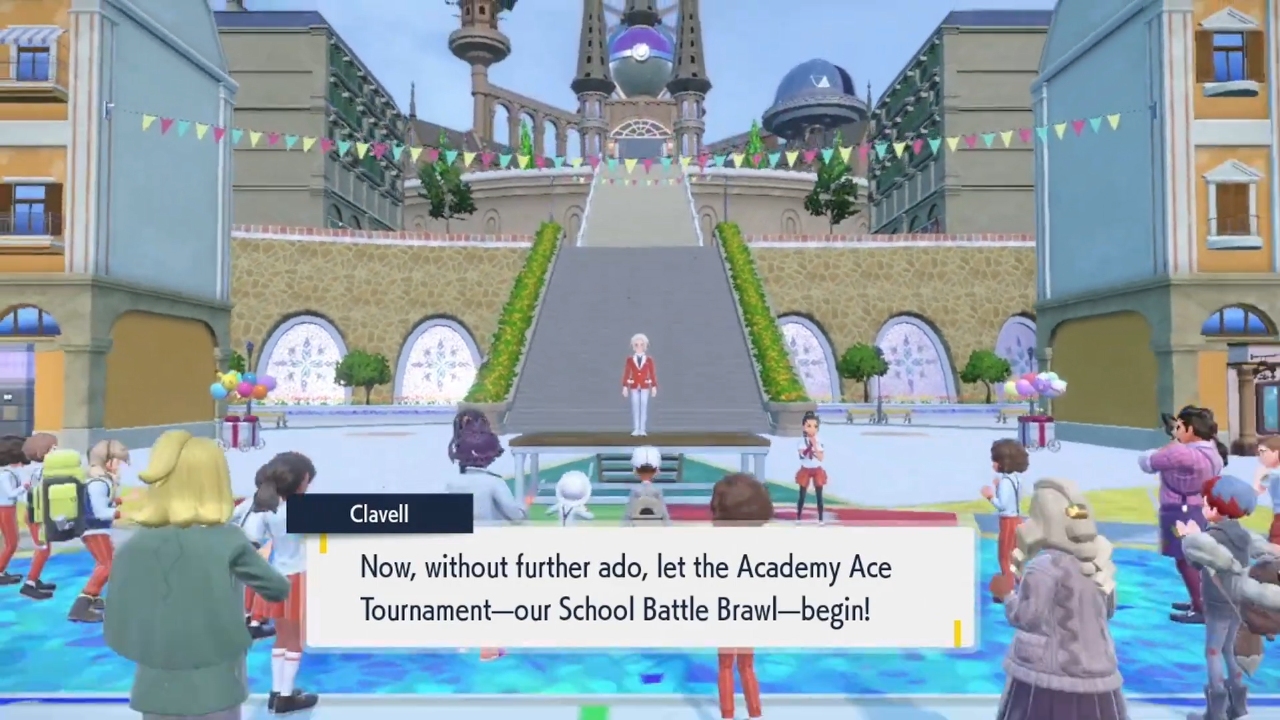
once you've completed the game's main story, its primary form of 'post-game' content comes in form of unlocking the Academy Ace Tournament, a sort of strange fill-in for the usual Elite Four rematches. it's a fun little subplot, with you facing off against Paldea's eight Gym Leaders once again, essentially to run a performance assessment on them as a favor to the League's chairwoman. the tournament itself is fine, allowing you to battle against the teachers of Naranja Academy. the reason i feel the need to dip into any of this at all is that, inexplicably, the game also has the vestigal beginnings of a post-post-game in the form of some 'slice of life interactions' throughout the school featuring Nemona, Penny, and Arven.
these are all more-or-less there to tie a nice little ribbon on each character's growth throughout this game, allowing you to eventually enter their dorm rooms, a feature which doesn't actually do much of anything, but is greatly appreciated. Arven learns more about his mother and resolves that, with the pressing matters of Mabosstiff's health and the imminent time machine apocalypse taken care of, he's going to work on his cooking more. Penny has concerns about her Team Star cohorts and falls back on her tendency to assume the worst in people before seeing that her friends are going to be just fine. the one that really stood out to me, though, was Nemona's epilogue.
with all pressing matters taken care of and the school beginning to run the Academy Ace Tournament on a basis of 'whenever the player character asks us to', we finally get a glimpse of what Nemona's day-to-day seems to have been like before we became a fellow student. she battles in the school's courtyard for hours at a time, and often finds herself challenging just about anyone with a Pokémon, only realizing after the fact that she's perhaps built up a bit of an intimidating reputation which she can't quite wrap her head around because as far as she's concerned, Pokémon battling is worth it, win or lose.
eventually, when you reach the end of this subplot and meet up with Nemona for a heart-to-heart, she confides in you very earnestly about how this reputation makes her feel. she touches on how she's well-aware she likes battling more than would be considered 'normal', and how that love manifests in the form of becoming incredibly talented. but she also talks about how that talent alienates her from others, how people told her she must just have some 'innate gift' - in the game's own words, that it makes her "start to feel like there was this invisible wall between me and everyone else", and how she feels like she has to hold back as to not scare any potential friends.
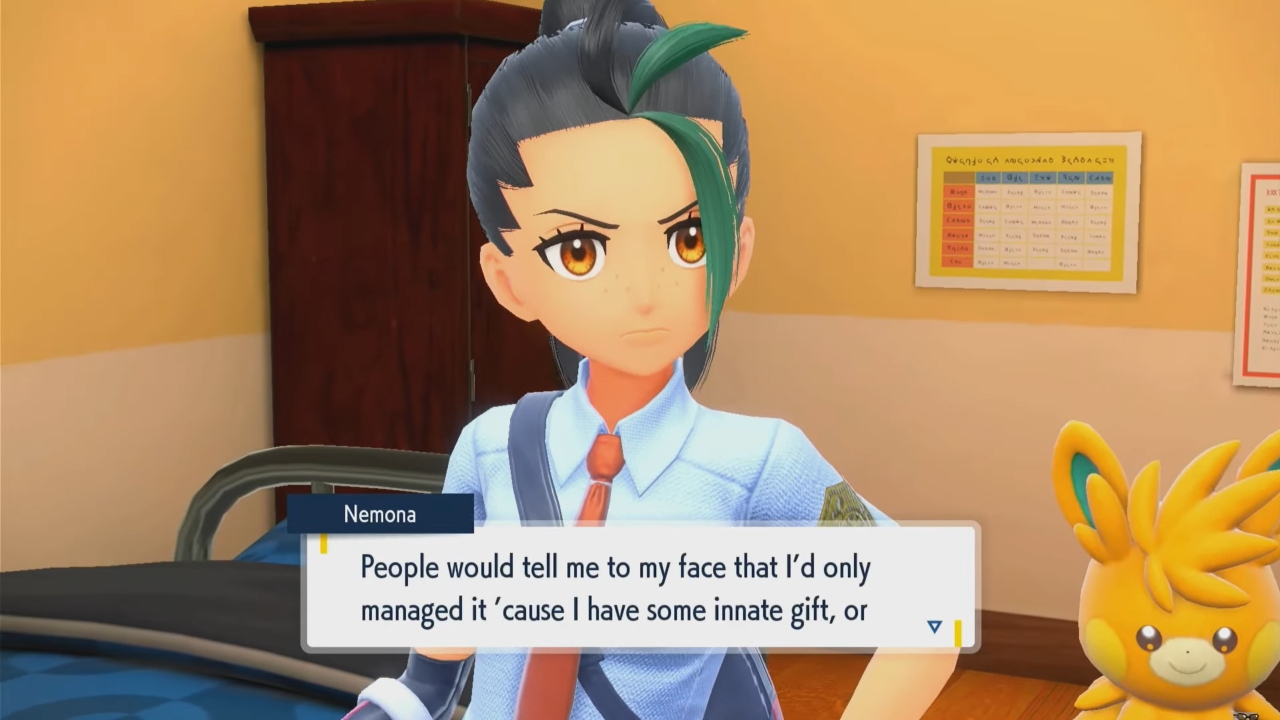
and i sit there, and i read through all this very carefully, and i go to myself, "holy shit, did Game Freak just write some of the most accurate ADHD representation i've ever seen and hide it at the very end of their video game?". i thought that having a subplot about an old stubborn dog regaining its health would be the only thing that got me so emotionally worked up, but they really did get me crying twice.
i feel like popular fandom perception of Nemona has already skewed hard into the rather joke-y interpretation that she is more-or-less Goku, always looking for a fight, regardless of the time or place. i don't necessarily want to shame people who lean into this bit - the game itself does, at least once or twice - but i will say that in the wake of this last little bit of dialogue, it feels like lots of people are very, very much missing the point. maybe, as a lifelong Pokémon fan with ADHD, i'm projecting just a bit, but in a game that addresses things like the way that school systems fail victims of bullying, it feels incredibly pointed to have this be essentially the 'big reveal' we get with Nemona, that she wants to confide privately in a friend about what very unavoidably sounds like the struggles of being neurodivergent and how she's glad to have met someone who understands her.
luckily, odds are that this isn't the last we'll see of these characters. on top of giving us these epilogues, the game's already packed with hints that there's more going on with the Paradox Pokémon and more mysteries left to uncover in Paldea. if Sword and Shield are anything to judge by, we'll be receiving DLC sometime in the next year, although if weighted against my personal luck with buying Pokémon titles, it'll somehow end up being a full-ass pair of $60 games again. either way, i hope it won't be too long before i'm talking about this game and these characters yet again.
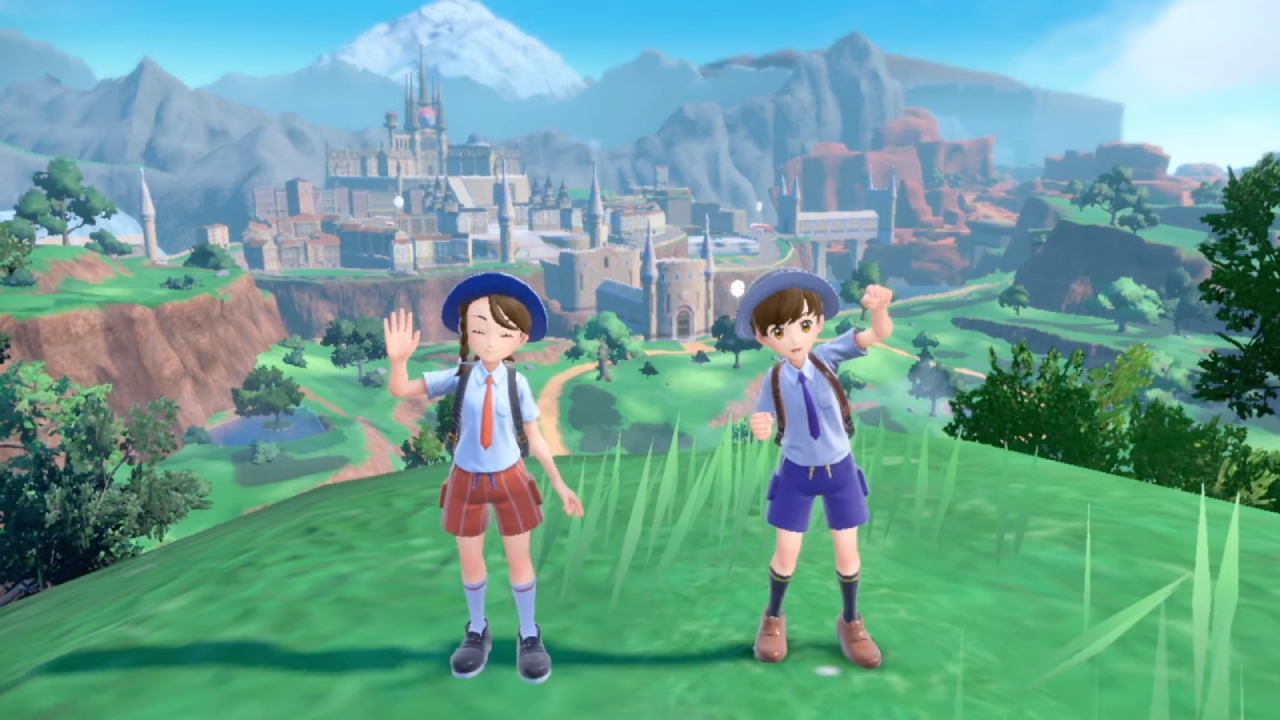
Pokémon Scarlet is, without a doubt, a mixed bag. it's, in my mind, the most innovative game in the series, and it's left me refreshed with the promise that all these years later, there's still something to love about Pokémon. for a long time, my vision of the 'perfect Pokémon game' was rooted in quantity, in this dream that they'd one day make a game with all the regions and all the characters and all the battle facilities and nothing could go wrong about it. Pokémon Scarlet feels like a stark tempering of that dream. there's hardly any way that could happen now, not with the pace these games are being made at, or with the scale of what even one open world region looks like. but that doesn't have to be the worst thing in the world. as long as Game Freak keeps making games like Pokémon Scarlet that pleasantly surprise me, that try something new even if it means making a few compromises, i think they're getting on the right track for me.
for some people, those compromises are going to be too much, and i don't think that's a 'wrong' way to interact with this franchise, either. i can see where constantly seeing slight steps in the right direction can get frustrating, and how improvements have a tendency to come with a cost somewhere else in the game, whether that means in terms of performance or outright breadth. what i'll reiterate here, though, is that i feel like i've seen what Pokémon looks like when left on autopilot, and i hardly think its current developers are resting on their laurels.
Pokémon Scarlet is rough, messy, imperfect, looks like it fell out of a time portal from 2005, and probably could've used at least another half-year before it launched. it's also fun, inventive, promising, and some of the most enjoyment i've gotten out of a game all year. do i like it because i haven't played Pokémon in a while and it's more of a 'comfort food' reaction than anything else? that's fully possible. perhaps i'll look back on this game in 6 more years and think of it as the biggest waste of potential in the franchise's history, as the last bit of hope before everything got worse than i could have ever dreamt of during my first dry spell.
i really, REALLY don't think so, though. Pokémon finally feels like it's looking towards a new future again, and i can't wait to see what the next 6 years bring for it, good or bad.


